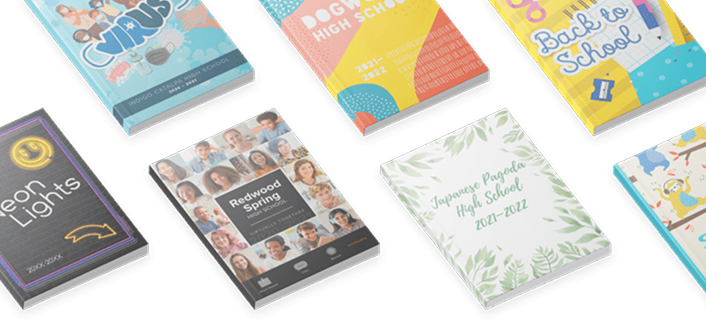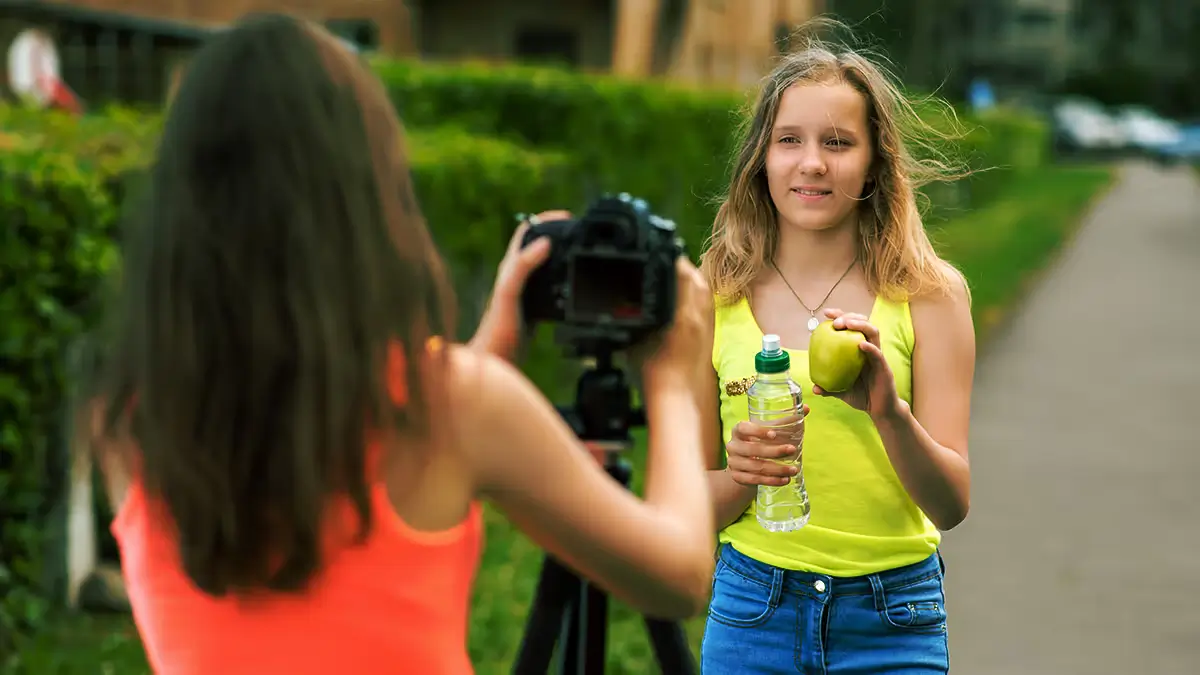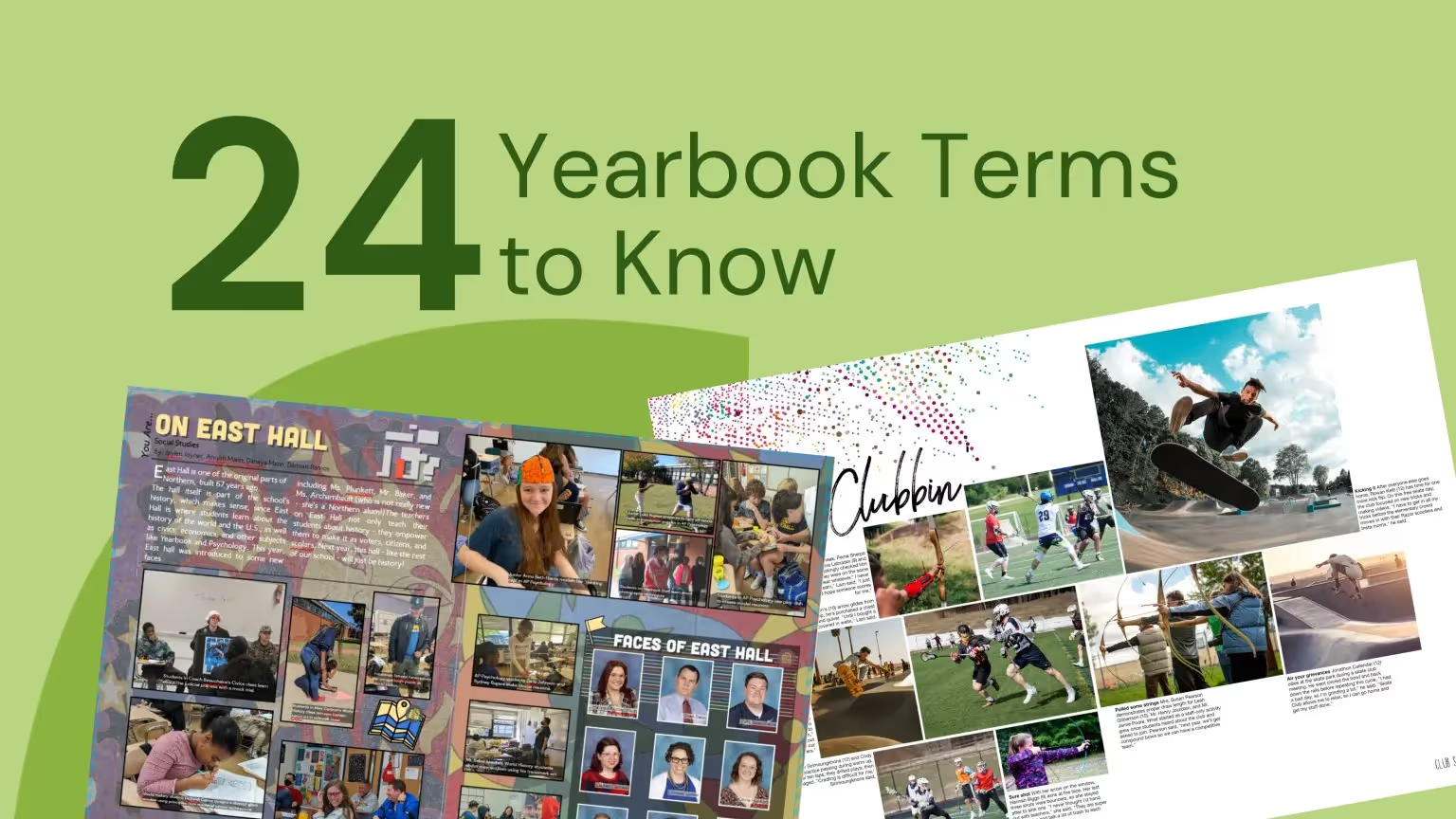Most popular
Subscribe to our blog
Most recent
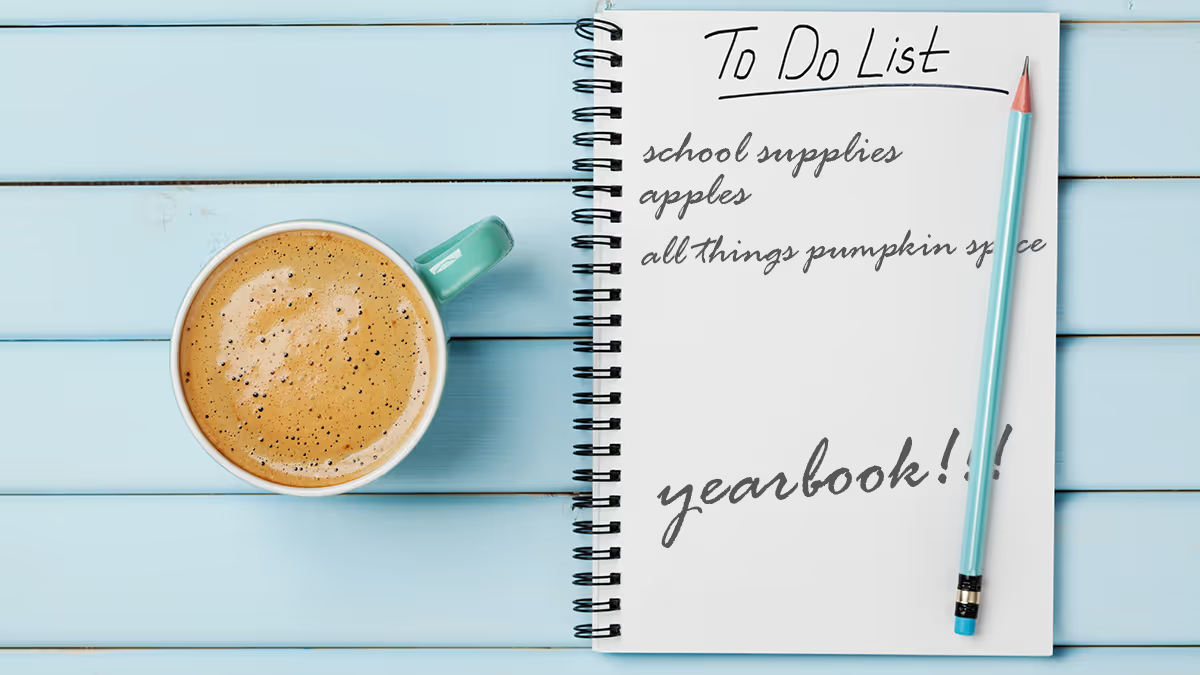
5 things to do to sell more yearbooks… in the fall!
Back to school means back in business. Selling your yearbooks should start as soon as you do! Here are five easy ideas to immediately implement to gain sales momentum at the start of the school year. Plus, we're giving you a social calendar and slew of sales flyers you can customize, then share.
1. Stick it to them
K-12 yearbook adviser Erika from California goes sticker crazy: “Our class meets 7th period, and with end times being staggered, my students run to the lobby and place a sticker on each [elementary] student as they head to the pick up lines.” The stickers have purchasing info on them.
In Georgia, adviser Dara does the same, then takes it one step further by sending a humorous follow up email:
We didn’t want you to get stuck without a yearbook, but if you accidentally ran the reminder sticker through the wash, here’re some handy tips to take care of it.
Consider designing your stickers to match the yearbook theme for a branding tie-in.
2. Plan posts
We all know the cliché: failure to plan is a plan to fail. Use a promotions calendar to diversify your posts and make sure your yearbook sales and marketing strategy match your audience.
We’ve created a free social media calendar to promote your yearbook and your program.
Bottom line: parents buy the books. They’re mostly on Facebook and Twitter, so angle your yearbook sales posts to them. Unless you’re a huge *NSYNC fan, reading buy, buy, buy is not going to get the job done alone:
- Use #throwbackThursday as a feature for campus leaders and parent volunteers to pose with an old yearbook
- Ask parents to share their advice to seniors
- Do a guess the teacher feature with senior photos
Social proof is one way you can positively encourage others to support your program by buying a yearbook.
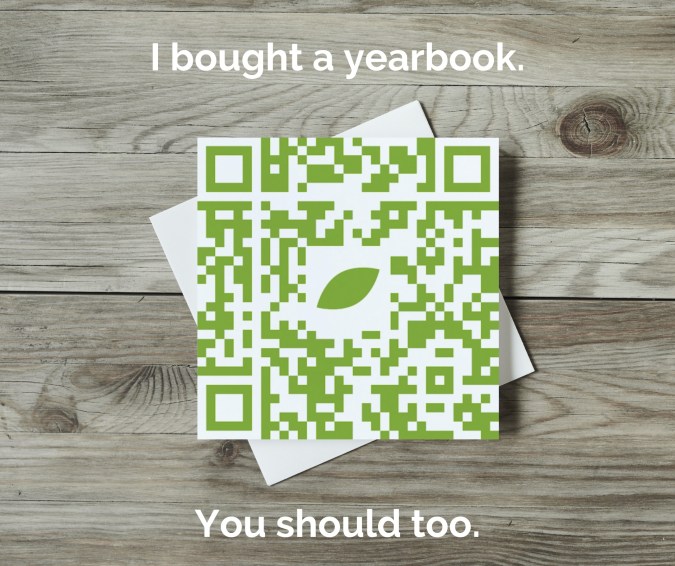
We trust our mom friends, so let’s give them a social badge to share.
We want students to want the book. Mix in student-centered messaging on Facebook and Twitter, such as reasons to buy a yearbook or highlight yearbook photos from a recent event that showcase non-buyers. Also, focus social media efforts on TikTok and Instagram to:
- Play up a trending sound or duet with a popular video
- Post a variety of messages to increase engagement
- Partner with campus influencers (ASB, PTA/PTO accounts, athletics) to hype your yearbook or upcoming event
3. Sell your program
One step beyond using social media to post links of how parents can buy yearbooks or recognition ads, is to show people the value of your yearbook program. The people who help make the book are just as important as your product.
- Show behind the scenes work: time lapse Photoshop work, someone hand drawing a layout, the yearbook committee meeting up for lattes and layouts
- Have the student body vote on a dominant image for a spread
- Reveal sneak peeks of the book
- Share your goals (e.g. 200 new followers, 60 books sold by December, 10 photos submitted) and, more importantly, how you celebrate
- Thank the yearbook heroes publicly on a #thankfulnessThursday
4. Simplify your yearbook sales processes
When someone says, “I need to buy a yearbook,” then you should be ready to sell it, not hand them a flyer. Repeat after me, “Sell the book.”
Evaluate your yearbook sales platform
Your yearbook program is a business whether you have a multi-year contract with book minimum orders or not. Therefore, one way you can serve your customers aka mom and dad is to make it easy for them to buy your product!
- How many clicks does it take to go from home to checkout?
- Do you have to scroll for days?
- When you share an ordering link, it is two miles long?
- Can you link directly to your school’s store or do families have to search?
- Are the sales reports easy to find and read?
Crowdsource efficiently
Parents want to buy your yearbook because they know their child will be in it. Make it easy to contribute:
- Add a specific, bi-weekly call-to-upload to your social calendar
- Pass out cards at games and events with your yearbook email to that mom with the camera
- Give shout outs to people who send you photos
- Use QR codes

Use QR codes on all. the. things.
5. ReMEMEber the posters
Texas PTA mom Rachael said she drives past her children’s school every week. When there’s a big announcement, such as yearbook sales, her school puts a banner on the fence or a series of yard signs. Because it happens intermittently, she knows it’s valuable.
Old school paper posters can be effective (just don't be wasteful!) if the messaging is correct and the location is on point. While we love a good yearbook meme, keep it clean, positive, and fun—just like your yearbook!
QR Code is a registered trademark of DENSO WAVE INCORPORATED.
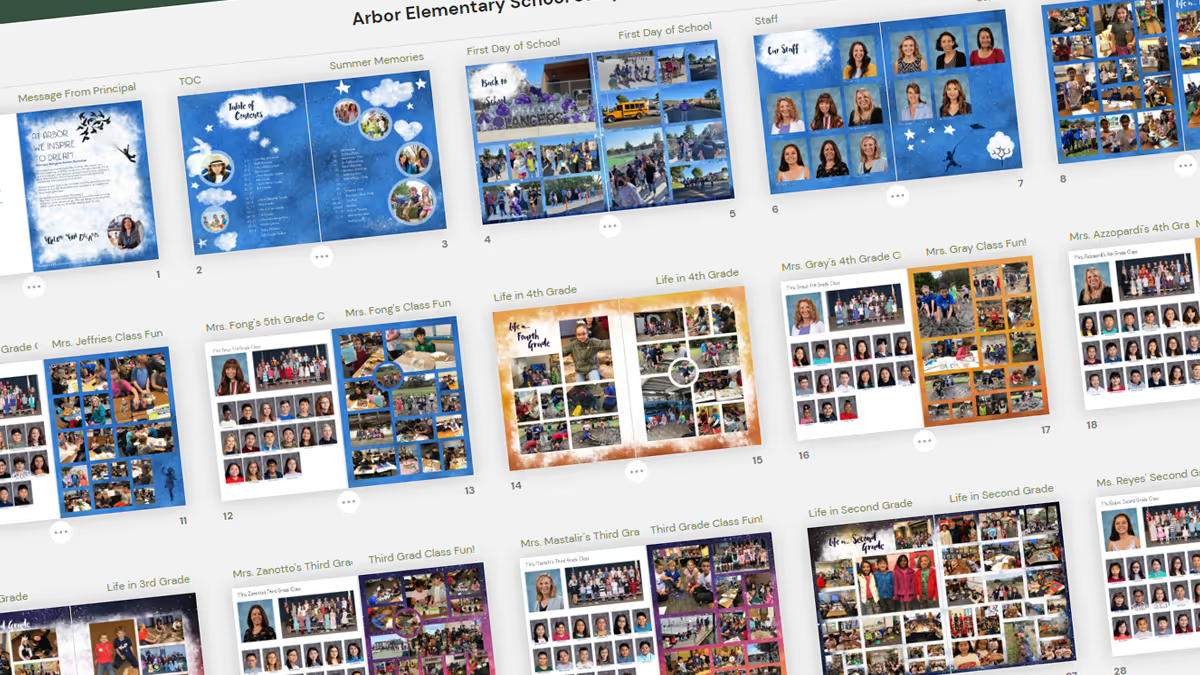
Pages to put in the yearbook
It’s go time: a blank yearbook ladder is in front of you and you need to know which pages to put in the yearbook. Do you take a chronological approach and cover events as they happen? Or should you create a sectional yearbook and handle coverage topically? Did you even know there were options beyond this is what we’ve always done? Below are samples of how other schools have done it and their rationale.
Put your yearbook pages chronologically
Sequoia high school’s yearbook uses 50 of its 148 pages to cover academics, student life, and special events on spreads. The two spreads below show what happened in the month of January and cover the literary food festival, spring musical auditions, lunchtime candids, as well as coursework from economics, Spanish, drafting, logic, yearbook, and graphic design classes. These spreads feature over 40 students and five faculty members.
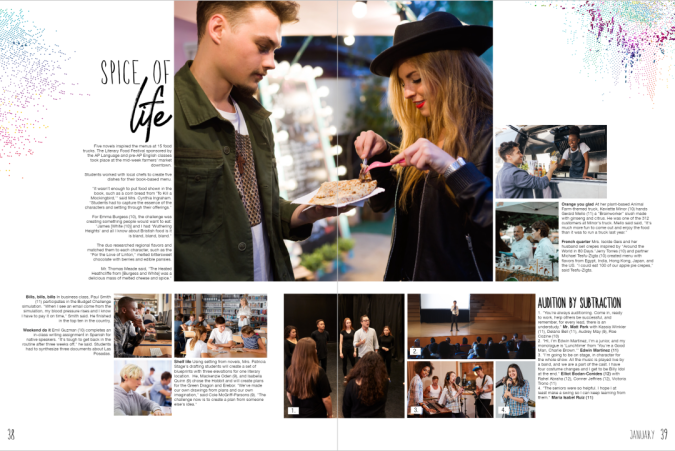
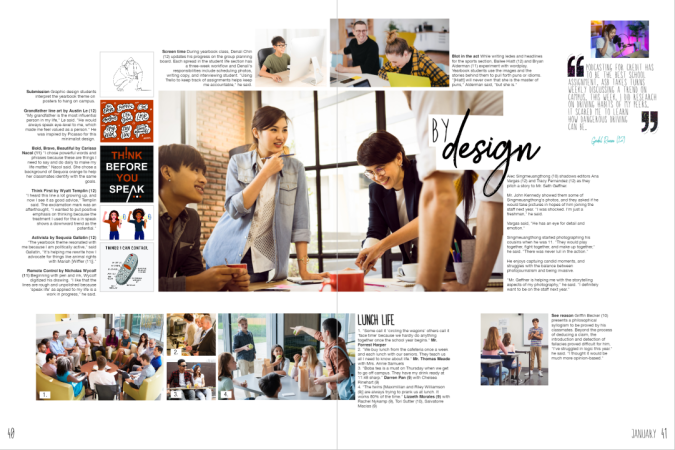
There’s no rule on how to put pages in your yearbook chronologically: we’ve seen schools organize their yearbooks monthly, quarterly, and seasonally. Treering's Seasons of Our Lives yearbook theme makes it easy to put pages chronologically in your yearbook.
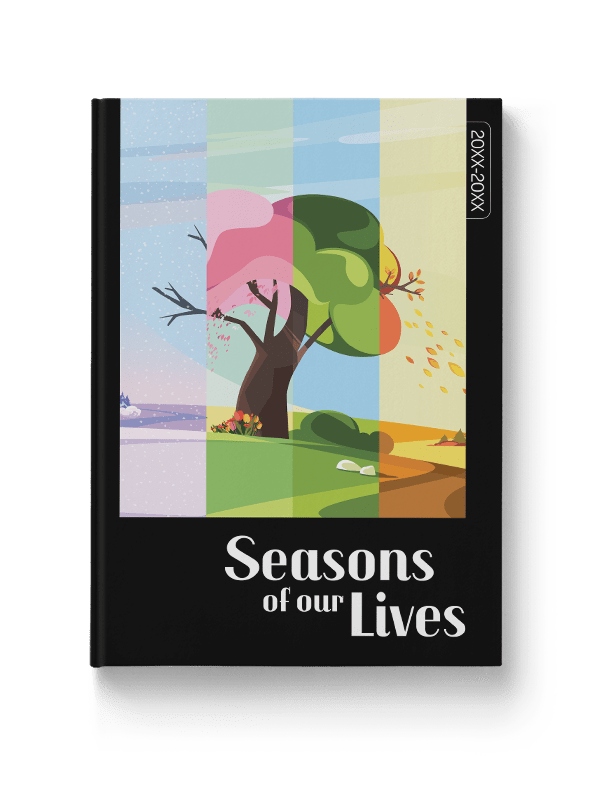
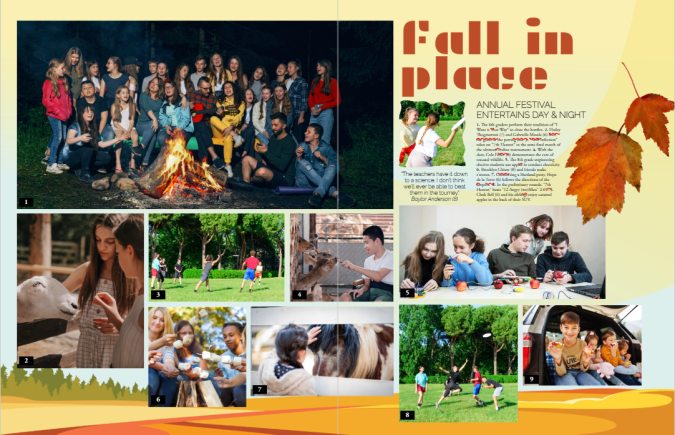
Feeling ambitious? Weekly chronological coverage can be of value to larger or K-12 schools within modules dedicated to academics, club activities and meetings, plus a sporting event of the week.
Chronological cover yearbook coverage helps keep you organized by:
- Structuring your coverage: you can’t cover an event after it’s passed
- Building in mini-deadlines: because you have a structure, you can build due dates and workflows
- Telling the story of the year as it unfolds
Use traditional yearbook sections
Tradition works for a reason. Done right, yearbooks show the complete picture (pun intended) of how students contribute to their communities. It’s a visual reminder of how each story weaves together to become a group narrative. Yearbooks are definitely worth bonding over.
By using sectional, or traditional, coverage to put together your yearbook, pages are placed in topical categories. We know to find Start with Hello in the club section and volleyball in sports.
Traditional sections to put in your yearbook include
People
Student portraits (organized by class, homeroom, or grade), staff, and personality profiles tend to dominate yearbooks. Consider breaking up coverage by adding in siblings, outside-of-school hobbies, and international students.
Student life
All the big, schoolwide moments plus the small distinctive ones (think homecoming, Read Across America, hot cocoa in Mrs. Cruz’s classroom, Dot Day, lawn chair lunches, etc.) make their home in the student life section.
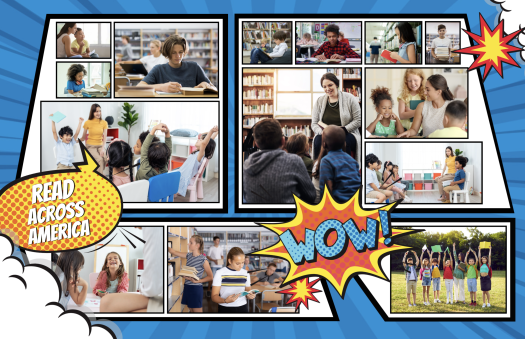
Organizations
Clubs and committees that comprise a large portion of student life may warrant their own section. If most of your clubs are inactive beyond a monthly lunch, consider keeping club activities in the student life portion or feature the group photos in the reference section.
Sports
Remember, action shots have a place, as do club sports, pre-game rituals, and scoreboards.
Academics
If you’re not putting a “Life in…” page, consider grouping academics coverage by grade or subject. Ensure daily classroom activities, as well as holiday parties, are included in the coverage.
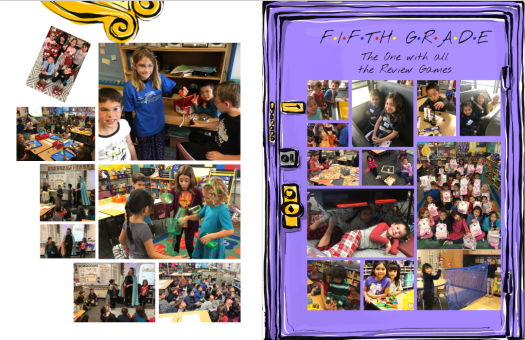
Reference
Put pages devoted to the index, group photos (club and team), and ads in the reference section of the yearbook.
If you need additional inspiration for which pages to put in your yearbook, check out these sample ladders from other schools and adapt them to fit yours.

Yearbook job descriptions
A common mistake is to hand out titles. (Think of that Oprah meme, "You are a yearbook editor, you are a yearbook editor...") Before you go crazy with inventing a structure, create job descriptions for each position. The benefit: staff members can focus on their designated areas of expertise, resulting in a more organized and high-quality yearbook production. Emphasis on the organized. We created these yearbook job descriptions to help prevent misunderstandings, reduce conflicts, and enhance communication within the yearbook team.
What jobs exist on a yearbook staff?
From editors to photographers and every copy-editing, photo-tagging contributor in between, yearbook staffs can be specialized or comprised of generalists. The most important things are to
- Recruit a team reflective of the community you cover
- Communicate the roles and responsibilities early and often
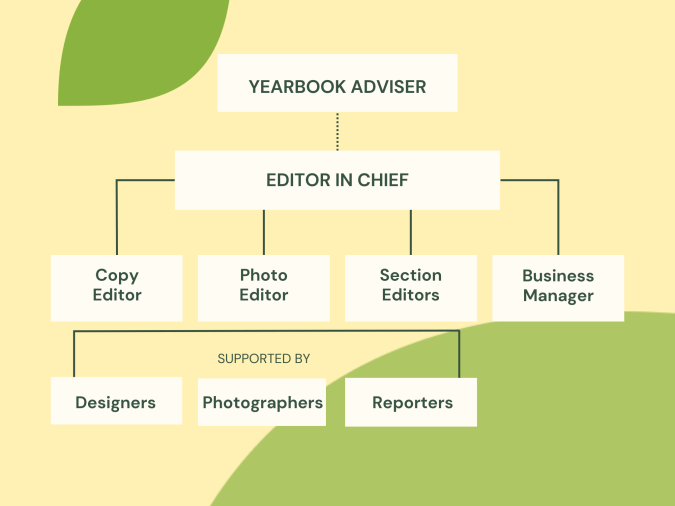
Editor in chief
As captain of the proverbial ship, the editor in chief (EIC) oversees the entire yearbook production process. (This is not to be confused with the yearbook adviser; more on that below.) The EIC manages the team and ensures the yearbook meets quality standards.
Daily duties include checking in with the editorial board (large staff) or coordinating with staff members to communicate yearbook progress and assigning tasks such as mini deadlines or photo assignments.
A successful EIC demonstrates leadership and talent.
Yearbook editorial board job descriptions
Your editor in chief will oversee the team that shapes the theme and coverage of the yearbook and helps train new students. This editorial board can be as large or small as your staff necessitates, and may vary from year to year.
Beyond the big picture design and team harmony goals, the day-to-day duties of editorial board members consist of:
Copy editor
Accuracy in grammar, spelling, and facts are the hallmarks of a successful copy editor. While the entire project does not rest on this one person’s shoulders, all section editors should do their due diligence to ensure their teams’ submissions are beyond the first draft phase prior to submitting.
Photo editor
Ensuring that the images meet quality standards and deadlines are met, the photo editor organizes uploaded images, ensures they are tagged accurately, and schedules photographers.
Section editors
Section Editors oversee specific sections of the yearbook, such as sports, academics, clubs, or student life. They coordinate with photographers and writers to ensure comprehensive coverage and consistency within their assigned sections. While the tasks of section editors may vary depending on the size of the yearbook team and the specific guidelines set by the yearbook advisor or school, below are some examples of team members and their section-specific duties.
Sports editor
- Obtain rosters and schedules for each team
- Coordinate team photos with the coaching staff
- Schedule photographers for practices, tournaments, and games
- Work with Booster organizations or parents to crowdsource photos
Reference/people editor
- Coordinate with the photo editor to ensure all photos are tagged
- Run index and/or flow portraits
- Create opportunities for storytelling throughout the reference or people section
Student life editor

What do yearbook editors do?
Content planning
Section editors need to plan the content for their assigned sections. This involves brainstorming ideas, scheduling events or activities to cover, and extending the yearbook theme through sidebars, body copy, and headlines.
Communication
Editors must ensure each team member knows their responsibilities and deadlines for the week. Some staffs find a weekly staff meeting where the editors detail the week’s events and assignments plus overall book progress keeps things moving.
Reviewing and editing content
It’s important to match seasoned staffers with new ones to provide useful feedback and coaching through regular checks for accuracy, clarity, and adherence to the yearbook's style and guidelines.
Meeting deadlines
The editorial board must monitor the progress of their team members and ensure that all content and materials for their section are completed on time. They also review the overall progress of the section and address any potential delays or issues that may arise.
Business manager
Working with the adviser to coordinate sales, track orders, manage budgets, and organize advertising and fundraising initiatives, the business manager helps to ensure the yearbook's financial success. (This sounds scarier than it is.)
Social media manager
Yearbook teams use a social media manager to handle the yearbook's online presence and engagement. Daily tasks include:
- Managing social media accounts
- Posting updates
- Sharing previews of the yearbook
- Interacting with the school community
Job descriptions for yearbook staff members
The majority of your students will fall into this category. These are the frontliners who cover events, write headlines, interview students, submit stories, re-write those stories, and make your team’s vision come to life. They collaborate with the editorial board to develop story ideas, learn to tell stories through photos, and fit layout schemes and page designs to content. Students will get experience with varied responsibilities. For example, having a basic understanding of photography can enhance the team's capabilities and contribute to equitable yearbook coverage.
Large staffs have the luxury of further specializing their teams.
Designers
Their specialty is arranging photos, text, and graphics to create appealing and organized page spreads that use theme elements. They are flexible and see how the part (a photo) contributes to the whole (your school’s story).
Photographers
Photographers capture high-quality images of various events, activities, and individuals throughout the school year. They aim for story-telling photographs, zoom with their feet, and show up. Oh yeah, and they tag their pics.
Reporters
Students, teachers, and staff members share their stories with your reporters who then create engaging narratives. They pre-plan open-ended interview questions, listen, and dive deep.
By establishing roles and responsibilities, your yearbook staff will work in roles suitable to their experience and interests, giving them an opportunity to experience personal growth and develop a skillset that interests them.
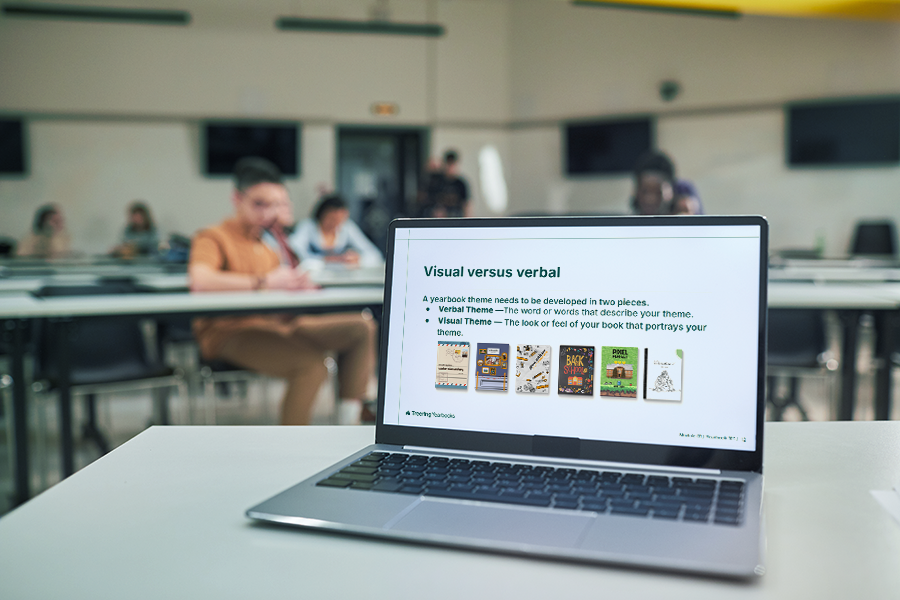
A yearbook curriculum you'll love teaching
New for the 2025-2026 school year, Treering’s free yearbook curriculum has expanded. From a new adviser handbook to 40 standalone lessons, you can take a recess from yearbook planning stress and put effort into yearbook production.
What’s new?
Teachers updated Treering’s previous curriculum. Another group of teachers tested it. We can confidently say it is teacher-authored and teacher-approved.
Each of the eight student-facing modules has a pacing guide and instructional slides. The pacing guides give you an overview of each module’s five grab-and-go lessons, including teaching resources, should you choose to expand instructional time. If it’s your first time teaching yearbook, the pacing guide also breaks down terminology used and shows connections between lessons.
Each lesson also includes Google Slides with
- Learning target
- Bell ringer
- Interactive lesson with guided student practice
- Exit ticket
You do enough. However, Treering knows no two schools/classes/clubs are alike, so we made our free curriculum 100% editable.
Curriculum FAQs
What’s free?
Everything. Charging extra for resources and support isn’t our thing.
How can I use the curriculum if I only have a club?
The first lesson in each module is a standalone one designed to give you the foundation for teambuilding, theme, design, writing, photography, marketing, and proofing. We recommend club groups do these eight lessons throughout the year.
Is Treering’s curriculum only for new yearbook students?
No, it is for yearbook creators of all backgrounds.
If you have mixed abilities in your class, we suggest:
- Using leaders to teach the first lesson in each module
- Flipping instruction: ask students to go through the slides on their own and be prepared to do the practice session in class
- Use mentor pairs for hands-on activities
Do I have to use Treering to use your yearbook curriculum?
Some theme, design, marketing, and editing lessons involve Treering tools.
Get Treering’s free yearbook curriculum
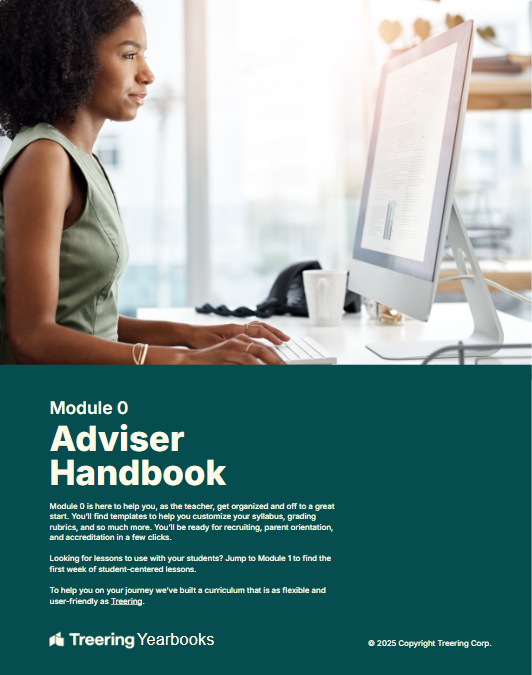
Module 0: adviser handbook
This handbook also contains all your yearbook prep templates: a student application, syllabus, grading rubrics, and staff manuals. It’s formatted vertically for printing.
Access the Adviser Handbook
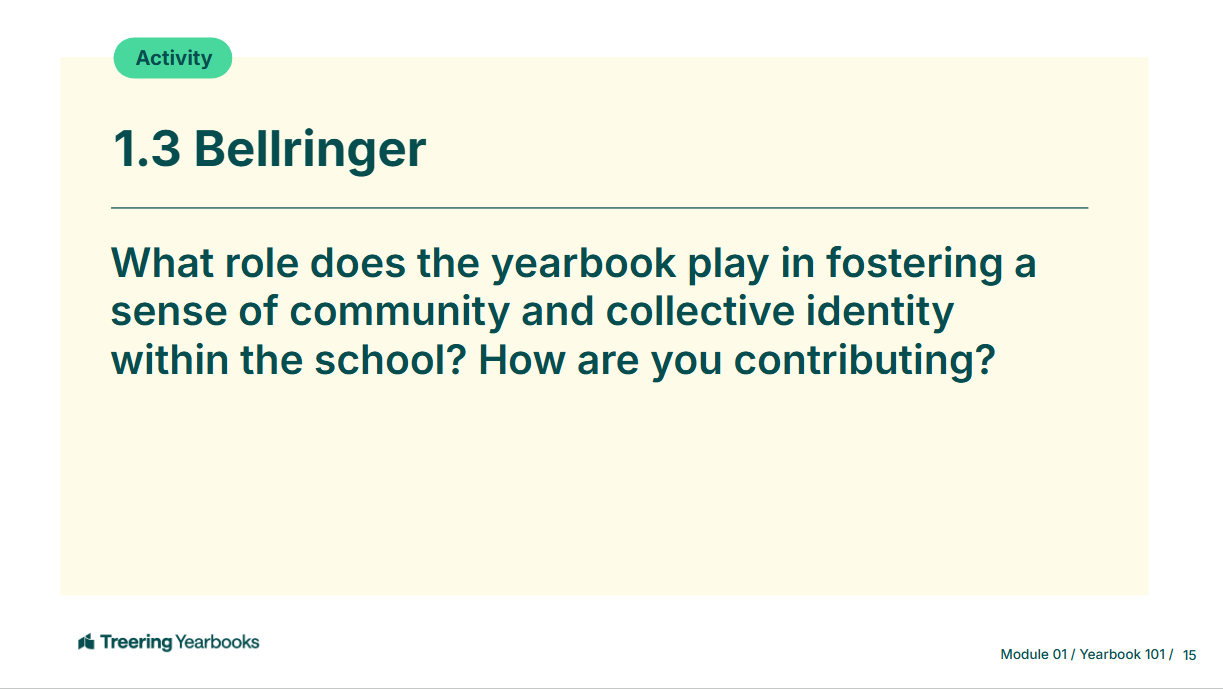
Module 1: yearbook 101
Building a yearbook culture on campus starts with your club or class. Each lesson in Module 1 focuses on team building, establishing clear expectations, and how students can use their individual strengths to build a unified product. This module builds a foundation for the following seven.
Module 1 learning targets:
- Understand the yearbook advisor’s expectations and the class structure
- Locate key information in the syllabus related to grading, expectations, deadlines, and responsibilities.
- Reflect on their personal strengths and interests related to team roles
- Identify and define core yearbook design terms by analyzing real spreads.
- Write specific, measurable, achievable, relevant, and time-bound (SMART) goals for the school year.
Access the Module 1 slides / Module 1 pacing guide

Module 2: kicking off the year(book)
Because yearbooks are part history book and part narrative, Module 2 helps students understand how and why the book they will create will stand the test of time. They will spend time creating a structure for their book and sharing their own stories through an “About Me” yearbook spread.
Module 2 learning targets
- Explain how yearbooks act as historical documents and cultural artifacts.
- Collaborate with peers to build a cohesive and well-organized ladder.
- Understand where and how to store content throughout the school year.
- Use yearbook vocabulary in context while giving and receiving peer feedback.
- Determine the central theme or message being communicated through advertisements.
Access the Module 2 slides / Module 2 pacing guide
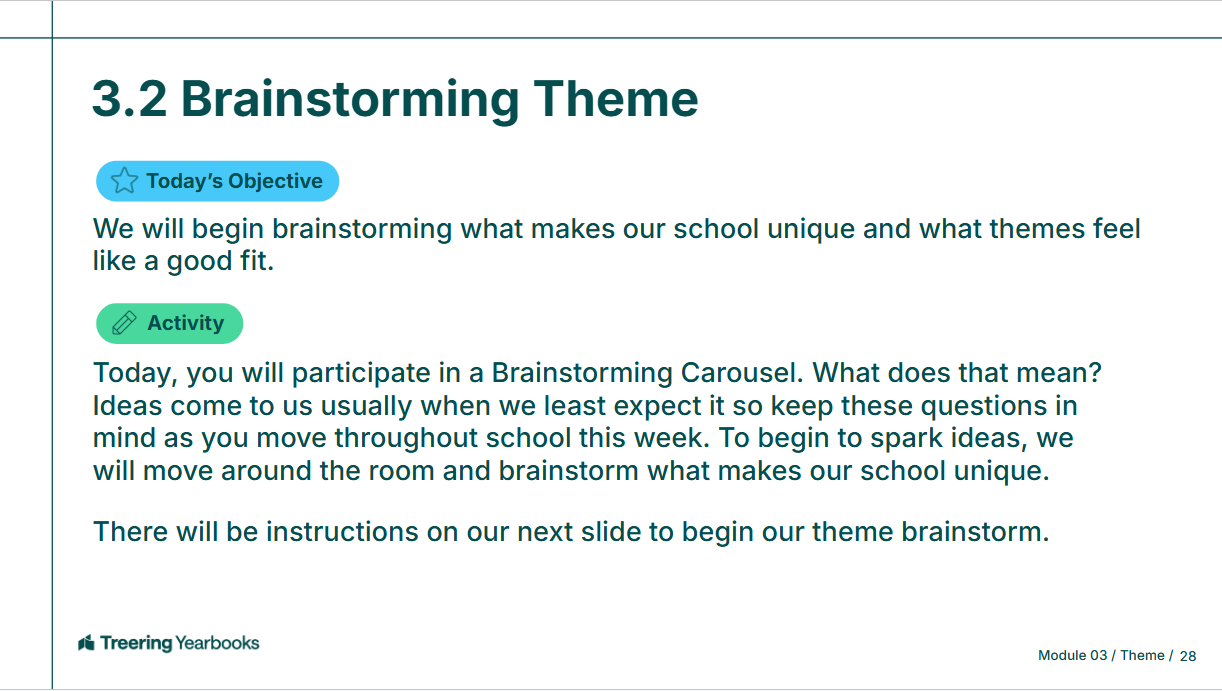
Module 3: theme
Theme is more than just a visual concept, and Module 3 will help you and your yearbook team create one that looks, sounds, and feels like the story of their year.
Module 3 learning targets
- Understand the purpose and components of a yearbook theme.
- Collaboratively brainstorm relevant and original theme ideas.
- Connect theme ideas to the student body and school year.
- Explore the tone, personality, and voice of themes in a creative way.
- Create a plan to apply the theme across content areas.
Access the Module 3 slides / Module 3 pacing guide
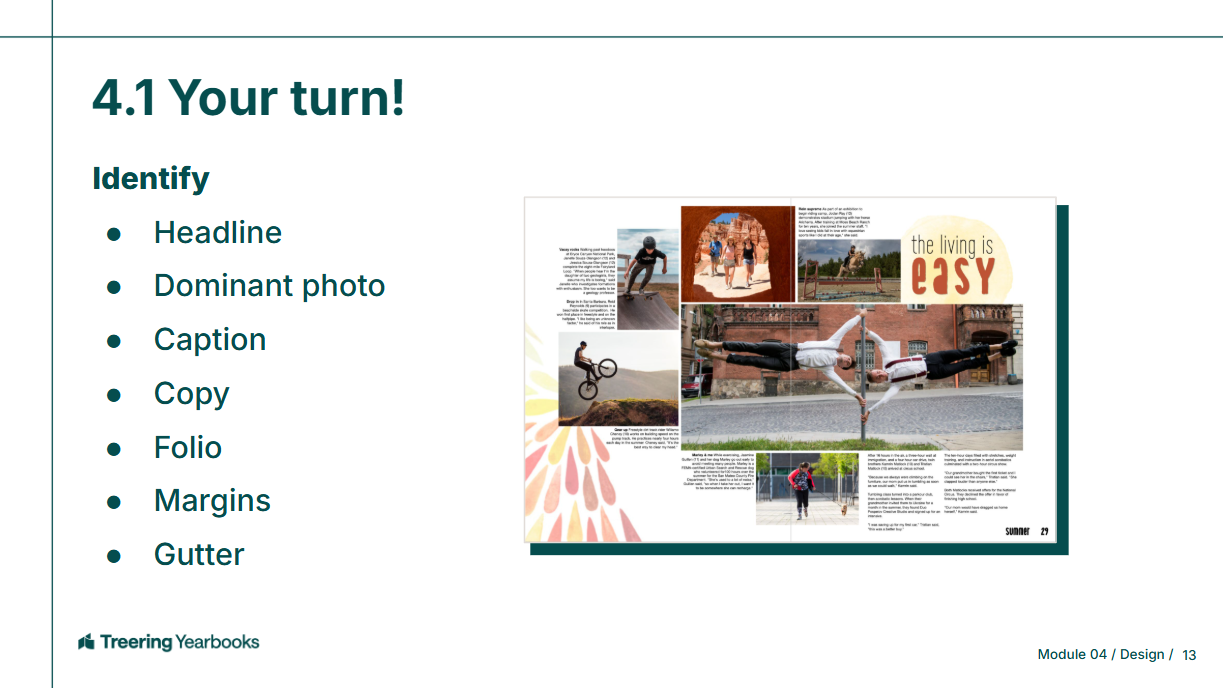
Module 4: design
Building upon the theme developed in Module 3, Module 4 is all about bringing that theme to life and learning how to design yearbook pages that guide the reader on a visual journey. Intentional design is the core of this module.
Module 4 learning targets
- Identify the building blocks of design.
- Use Treering’s design tools to create a yearbook spread.
- Create a color palette to express the yearbook theme’s tone and personality.
- Explain the impact of font family, size, weight, and contrast in yearbook design.
- Create text styles to support the visual theme.
- Identify and apply principles of design hierarchy by organizing visual elements (text, images, and white space) on a yearbook spread to guide the reader’s attention effectively and create visual flow.
Access the Module 4 slides / Module 4 pacing guide
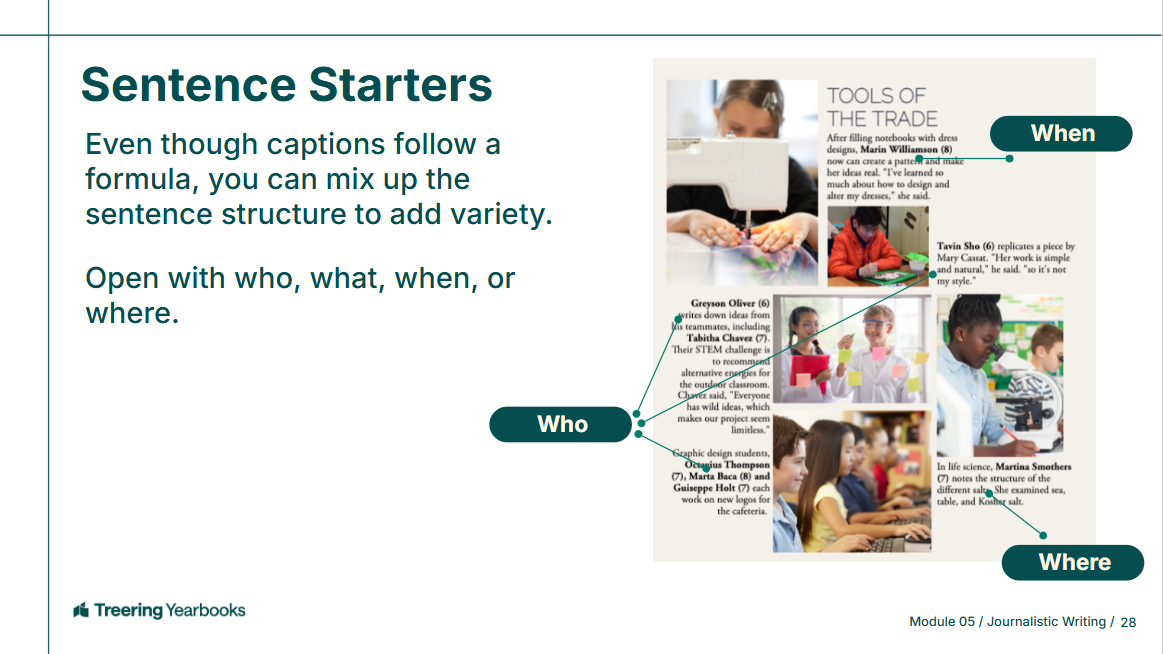
Module 5: writing
Many times, students tell us they don’t want to add copy to the yearbook because “no one reads it.” Captions, stories, and pull quotes add to the visual story. These voices provide the context, insider information, and even names for your photos.
They are worthy of pursuit.
Module 5 learning targets:
- Identify the different forms of captions: ident, summary, and expanded.
- Examine photographs to identify key information to craft summary and expanded captions.
- Define the five common topics.
- Structure an interview.
- Synthesize and interview by writing body copy and captions.
Access the Module 5 slides / Module 5 pacing guide
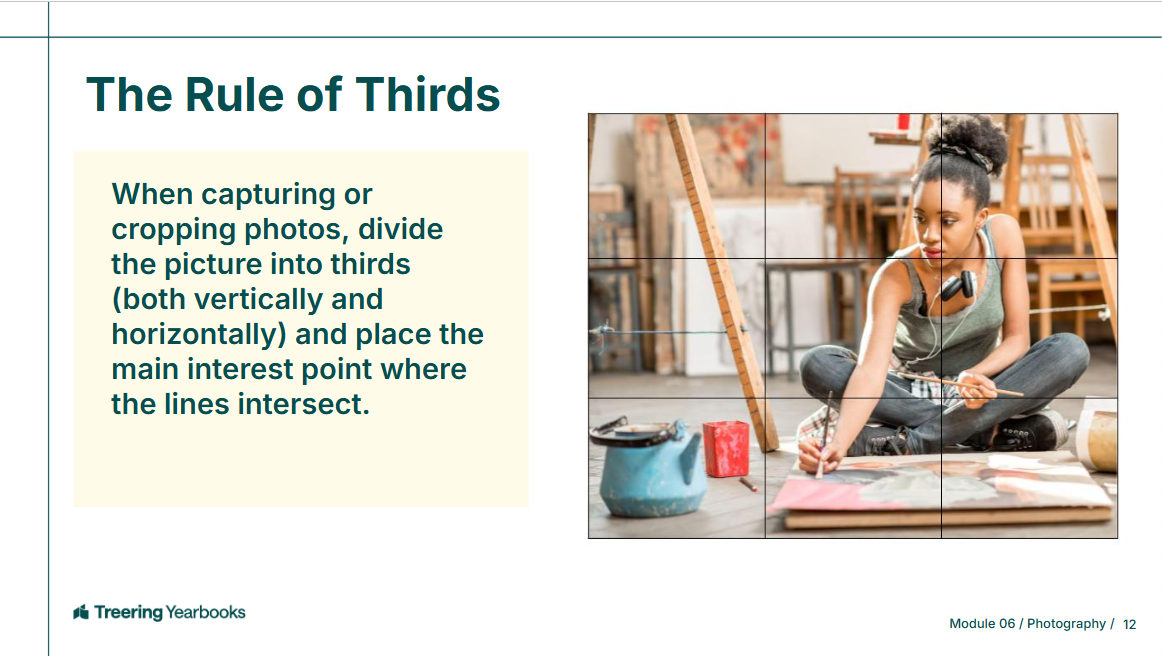
Module 6: photography
Transform an ordinary photo into an extraordinary visual story through hands-on activities and real-world applications. With your class, explore how angles and lighting and exposure settings can drastically alter a photo’s impact on a yearbook spread.
Module 6 learning targets:
- Identify the composition elements of a photo and evaluate.
- Photograph a subject using six angles.
- Compose an image using natural and artificial light sources.
- Recall the three parts of the exposure triangle and how they work together.
- Use Treering tools to present a photograph to its advantage in a layout.
Access the Module 6 slides / Module 6 pacing guide
Module 7: marketing - in development
Learning targets:
- Identify the components of a marketing campaign.
- Identify, classify, and rank yearbook value props.
- Differentiate marketing messaging based on audience.
- Initiate community participation in yearbook creation.
- Plan milestone celebrations for reaching yearbook creation goals.
Module 8: proofing - in development
Learning targets:
- Discuss and develop a consistent framework for all copy elements and community-submitted content.
- Review editing guidelines to help catch errors and maintain consistency by reviewing content early and often.
- Identify tools and methods to carefully proof both visual and written elements for accuracy and clarity.
- Use checklists and tools to ensure every page aligns with your yearbook’s design standards.
- Learn to use Treering’s editing tools to establish and maintain clean lines and a polished, professional look.
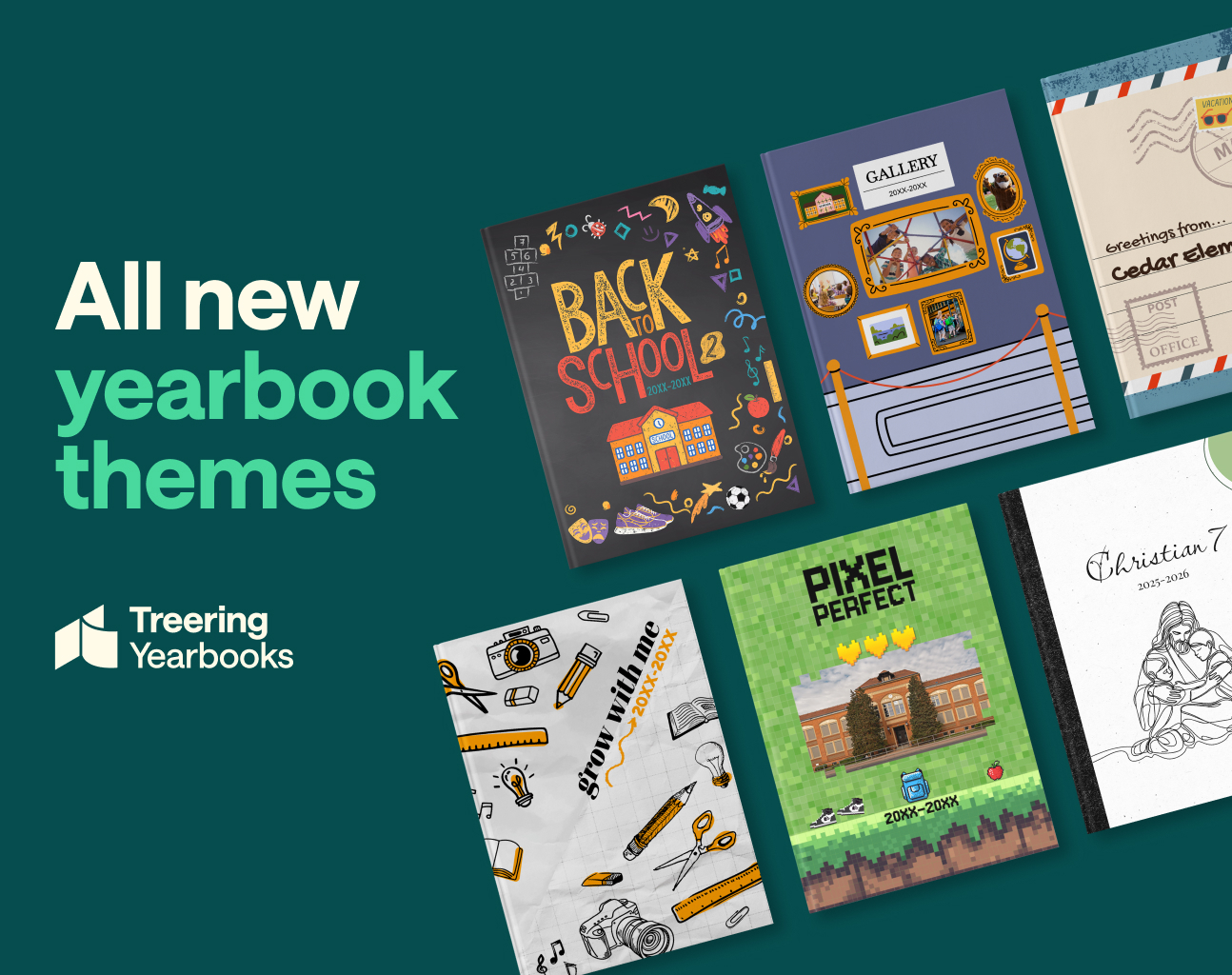
New 2025 yearbook themes inspired by you
In the spring, nearly 200 yearbook creators across three focus groups gave their feedback on design trends and current graphic offerings. The findings:
- Backgrounds need to be less graphic and more textured to not compete with the content
- Theme collections felt incomplete
- Elementary yearbook coordinators want a different background for each grade
- Some schools want spreads with up to 60 photos, others want bold showstopper templates to break up content
- Preferred graphic styles include line art, watercolor, and images inspired by nature
Treering’s response: yes
It was a yes of agreement, a yes of exclamatory delight. When evaluating each of the 2025-2026 yearbook themes, the design team went back to your list.
The first six new yearbook themes
Each of the new yearbook themes contains what you need to easily create a beautiful, stylized, photo-centric yearbook: backgrounds, layouts, coordinating graphics, and a style guide. Layouts range from graphic-heavy show-stoppers to photo collages with up to 60 photos. The layouts are designed with a built-in 1/4" margin and a grid system. (This way you won’t have to hit the down arrow 100 times or “eyeball” it.)

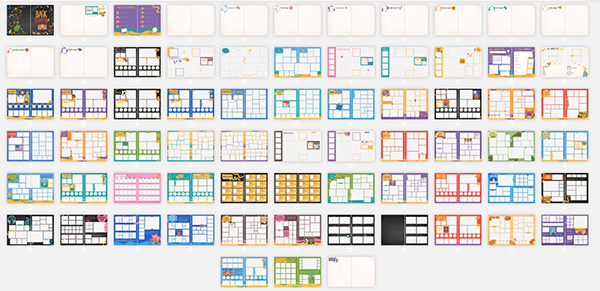
Back to School 2
Give your yearbook a sharp take on school spirit with just the right amount of whimsy. The hand-drawn chalk textures blend bright, bold hues with the nostalgic feel of a classic blackboard.
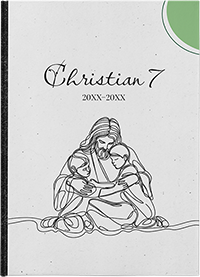
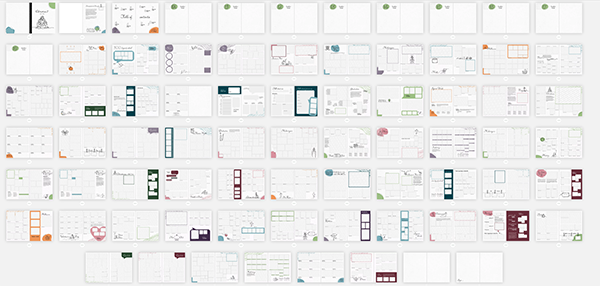
Christian7
Inspired by our third most popular theme, “Tied Together,” Christian7’s continuous line art contains graphics featuring faith-based and academic subjects.
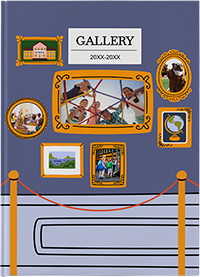
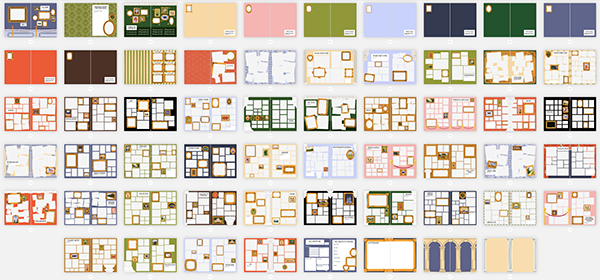
Gallery
This museum-inspired yearbook theme frames every moment as a masterpiece. It turns your year into a curated experience by showcasing every activity as worthy of display.

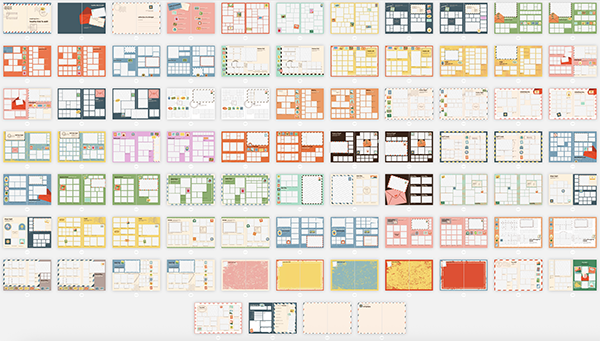
Greetings
We call the school year a journey, and with this yearbook theme, it truly is. The mid-century charm and travel-themed flair celebrate school life as a collection of picture-perfect stops.

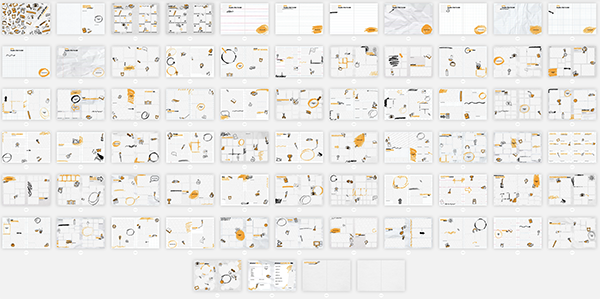
Grow with Me
Designed with K-8 and K-12 schools in mind, “Grow with Me” has double the core graphics to show a progression from kindergarten through the upper grades. It grows from playful to polished with your students: think loose lines and wide rule transitioning to tight, precise graphics and graph paper. Pops of color vary from a waxy crayon to a layered highlighter.
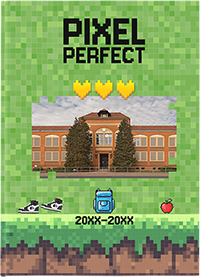

Pixel Perfect
Capture the energy of the school year with Pixel Perfect, a tech-inspired yearbook theme that is stacked with personality. It’s bold, playful, retro, and yet completely on trend.
View a slideshow of the 2025 yearbook themes.
The 100
While you love the theme development and the included graphics, you also asked for more “related” graphics to round out each theme. You wanted to illustrate the happenings on campus further. Again, the design team answered.
Introducing the 100, a curated collection of arts, academics, athletics, and event graphics from the top-searched images, illustrated with each theme’s personality.

Arts and academics: backpack, binder, books (stacked and open), bus, calculator, camera, chalkboard, chemistry flask, clipboards, clock, crayons, diploma, DNA strand, drum set, eraser, film reel, globe, glue stick, graduation cap, guitar, headphones, highlighter, laptop, lightbulb, lunchbox, magnifying glass, medal, microphone, microscope, monitor, music notes, notebook, paint palette, paintbrush, paperclip, pen, pencil, piano keys, red apple, ruler, school building, scissors, sharpener, speech bubble, stapler, test tube, theater masks, trophy, trumpet, and violin.
Athletics: badminton racket, badminton shuttlecock, baseball, baseball bat, baseball glove, basketball, bowling ball, bowling pins, boxing gloves, cheer megaphone, football, golf ball, golf club, hockey puck, hockey stick, ice skates, lacrosse stick, pom-poms, referee shirt, running shoes, sports jersey, soccer ball, softball, swim goggles, tennis ball, volleyball, water bottle, and whistle.
Events: bingo night, Christmas, color run, fall fun fest, father/daughter dance, field trip, graduation, Halloween, mother/son kickball, movie night, patriotic, read-a-thon, Red Ribbon Week, spring dance, spirit week, talent show, Thanksgiving, trunk or treat, Valentines, wax museum, and winter events.
Style guides for every new theme
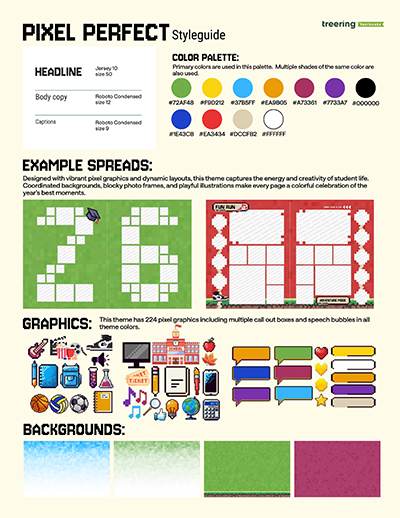
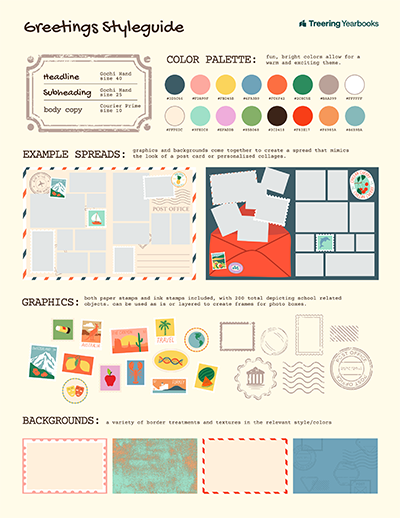
Perfect for emerging designers who use Treering themes as a launch pad to design their own layouts, these style guides contain
- Coordinating color palettes
- Headline, sub headline, and body copy font recommendations
- Ideas to make the graphics interact with photographs and text
Download the style guides for each theme here.
And if you noticed the bit about “part 1,” we hope you’re excited: there will be four more themes in September.

New school year, new us
We’ve got something exciting to share: Treering just got a bold new look.
After months of collaboration, exploration, and a lot of thoughtful design work, we’re thrilled to unveil a refreshed brand identity, one that better reflects who we are today and where we’re headed.
Turning the page
We’ve moved away from the softer, muted tones of the past and embraced a more vibrant, energetic palette that speaks to the creativity and joy at the heart of what we do.
Our new logo is a small thing that says a lot—it’s clean and modern, but it also holds meaning. The icon forms a “T” for Treering, doubles as an open book, and symbolizes our approachable, flexible platform. It’s our mission, captured in a single shape: helping people turn everyday moments into memories that last.
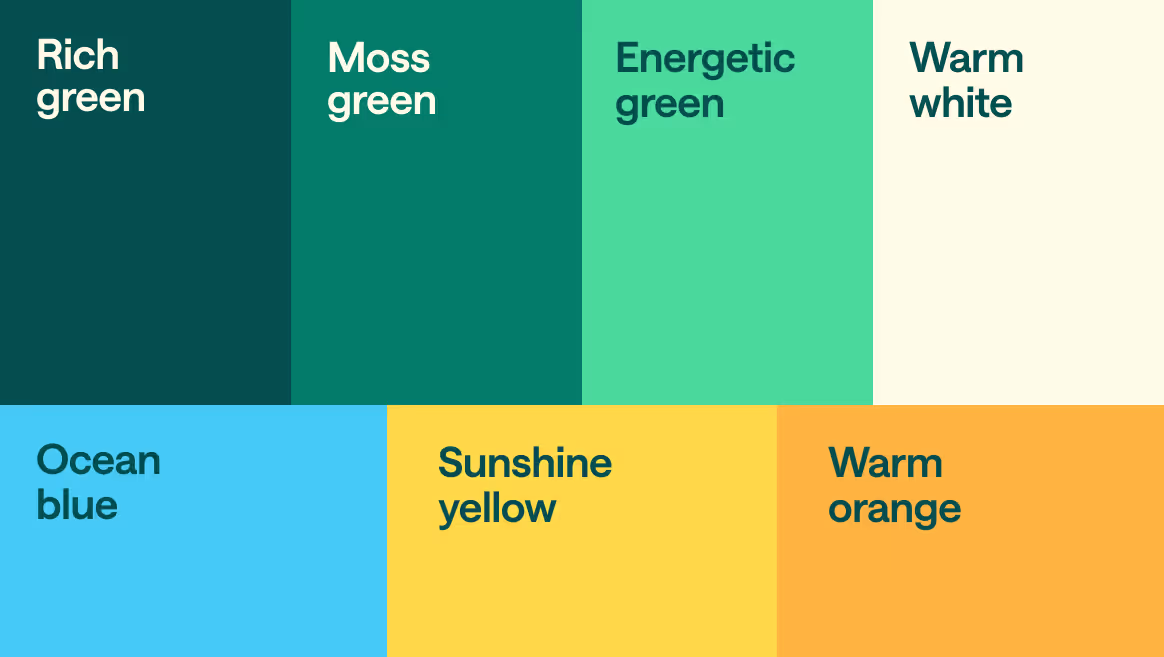
Why we did this
This wasn’t just about updating fonts and colors. We took a step back to reflect on who we are as a team, what makes Treering unique, and how we want to show up — for schools, parents, and now, for travel brands through Treering Memories.
After 16 years of innovating how memories are captured, shared, and preserved in the school space, we’re expanding our vision. Treering is evolving into a full Memory-as-a-Service platform, extending our technology and expertise beyond yearbooks to meet the growing demand for smart, personalized memory solutions across industries. With Treering Memories, we’re bringing the same intuitive experience, powerful AI, and just-in-time printing to the travel world by helping brands turn unforgettable trips into meaningful, lasting keepsakes.
The new visual identity balances the warmth of nostalgia with a fresh, modern sensibility. Our photography style is more candid and vibrant, our typography is clean and bold, and everything is built to work seamlessly—whether in a yearbook or in a photo memory book from a travel adventure.

What’s next
We’re heading into the school year with renewed energy, and now a look that matches it. But while our visuals have changed, what we care about hasn’t. We’re still the same team, focused on helping people capture and celebrate meaningful moments with care, creativity, and technology that makes it all easier. This year, we’re rolling out smarter tools to simplify yearbook creation, along with fresh new themes designed to give schools even more ways to personalize and elevate their books. It's all part of our ongoing commitment to making yearbooking easier, more intuitive, and more inspiring for everyone involved. We can’t wait to show you what’s next. Let’s make this school year unforgettable, together.

I'm the yearbook coordinator... Now what?
Volunteered or volunTOLD? However you ended up as the yearbook coordinator, you'll walk away with four strategies to help you start and finish your yearbook! But first, pin, save, or bookmark the essential yearbook timeline. Are you taking over a yearbook class? Check out our six weeks of lessons to start the year and our free Google Drive templates. Getting a late start? Here's how to build a Yearbook in 60 Days.
The Five Ws are as relevant to yearbook coordinators as they are to writers:
- What am I doing?
- Who is going to help me?
- When will I be finished?
- Where am I going to get all the photos?
- Why did I ever agree to do it?
Strategy 1: plan with success in sight
Yearbook coordinator, meet the ladder; ladder, meet the yearbook coordinator. Your yearbook ladder is your plan. Use it to determine how many pages you will put in the yearbook and what will go on each.
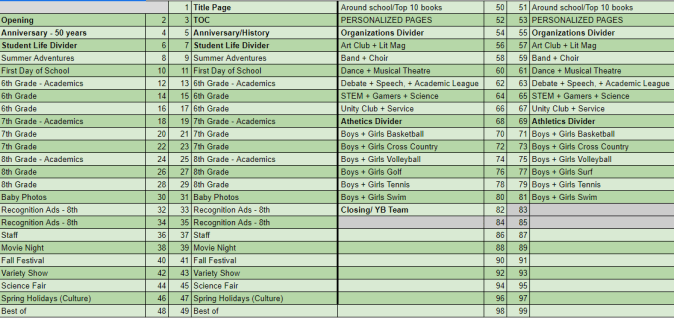
Four veteran yearbook advisers shared theirs with you. You can make a copy to edit and adapt them to your school community's needs. Remember, there is no "one way" or "right way" to do this.
You'll know you successfully managed your program when you've completed these spreads. (Better yet, since it's digital, you can add, subtract, and move spreads as needed.)
Strategy 2: phone a friend
Now that you have a plan, it's time to ask for help. Look at your ladder and see how you can partner with students, parents, and school leadership.
Yearbooking is a contact sport.
Tweet
Build a team
Boosters, parent groups, teachers, and students are all stakeholders in the yearbook creation process. Involving them will make your job easier as the yearbook coordinator. You can crowdsource content through:
- Shareable folders
- Social media
- Targeted email asks (e.g. parents of students who went to camp)
You can also recruit team members to help you build and market the yearbook. With Treering, you can set permissions and assign pages to help delegate your workload. Additionally, parents and students can help gather content and promote book sales.
Students
Students have a pulse on campus life and are invaluable for determining what content is valuable. Work with them to get photographs from in-school activities and events: labs, presentations, assemblies, and lunch candids.
Parents
Partner with parents to get yearbook sales information in PTG/PTO/PTA newsletters and social channels, promote campus organizations, and plan distribution events.
Remember this clip from the Golden Age of TED Talks? To create a movement, you just need one to jump on board. As yearbook coordinator, you're the lone nut (sorry, not sorry). How will you nurture your first follower?
Your publisher
Check with your yearbook publisher to get access to their training. Treering offers free Yearbook Club webinars throughout the year plus our signature event, TRL: Treering Live during National Yearbook Week.
Connect with school leadership
From obtaining a student and teacher roster and seeing the master calendar to getting the principal's message and coordinating picture day, all the proverbial magic happens there. The front office is your go-to resource. Chances are, they will also reach out to answer the inevitable, "Did I buy a yearbook?" question parents will send their way all year. If your front office doesn't have dashboard access through Treering Yearbooks, consider sending a weekly sales update to help them help you.
Two questions to ask:
- When may I get student and staff rosters?
- Who is the school photographer? (Remember to request your portraits in PSPA format.)
Also, find out who your club and sports leaders are then send an email to introduce yourself and request photos. Ensure your shared photo folders are set up so they can submit photos. Regular reminders—think a day after that tournament down in Simpsonville or after the choir nationals in Chicago—help get those folders filled.

Strategy 3: build
Remember the tortoise and the hare? Spoiler alert: slow and steady wins. The same is true for your yearbook. We feel like it has to be complete asap as possible, and when you're setting your own deadlines, proper planning puts you in control.
Fall tasks
- Select your theme (or stir up some excitement by letting the school vote with these editable surveys ES, MS, HS)
- Update your rosters in Treering before promoting book sales
- Order your free flyers and start promoting sales
- Upload portraits
- Start building pages as events happen (first day, Halloween, Dot Day, etc.). Trust us, you’ll feel better in the spring if you don’t wait to do it all.

Spring tasks
- Send purchase reminders
- Finish up your spring activity spreads
- Download a PDF proof and have teachers approve their class pages to ensure students’ names are correct and no one is missing
- Order your free printed proof to ensure fonts are easy to read and the cover looks good
- Double-check your order list and add homeroom teachers to any student that doesn't have one listed for easier distribution
- Redeem any free books you earned or use your fundraiser to purchase extra copies
- Hit Print Ready!
Strategy 4: know it's OK
It's OK if everyone is not 100% passionate about what you're doing.
It's OK if it's not perfect.
It's OK if you had more fun than you thought!
It's OK to be glad it's finished.

Teaching yearbook: digital escape room
Unlock the mysteries of yearbooking with this classroom-ready lesson plan. We designed this yearbook escape room to kick off the school year or to serve as an informal assessment. With yearbook vocabulary at the core of this activity, students progress through a task to “unlock” another. When all four keys are complete and correct, they unscramble the final code. Cue crowd cheering noise.
Escape room activities
Students progress through the following four activities to stretch their knowledge and application of yearbook terms.
Task 1: Yearbook lexicon
Find words related to yearbook terms within the jumbled letters horizontally, vertically, and diagonally. After finding all 21 words, the unused letters in the grid will spell out a hidden message which will unlock the next stage of the escape room.
Task 2: Emoji combinations
Analyze the emojis' meaning in the context of yearbook-related activities and concepts. After entering all the words, students will find a three-digit code used to unlock the next task.
Task 3: Yearbook riddles
Solve six riddles based on the who, what, and when of yearbook creation. Once solved, a hidden word will reveal the next clue.
Task 4: Identification station
Examine two yearbook spreads and identify the elements of design and yearbook hierarchy. Students’ answers will produce the last three letters needed to unlock the final puzzle.

Teacher instructions
This electronic escape room works best in student pairs. Students enter their responses on a self-checking Google Form to advance through the activity while collecting letters to unscramble for the final code. (This also works well if you have a sub covering your class and want to leave a low-prep, meaningful activity.)
Because you know your class best, you can hand out tasks one-by-one or distribute them in a packet. Both require the trifecta of teamwork, collaboration, and content knowledge to be successful.
To use the yearbook escape room,
- Download the task cards; print one copy per group of 2-3 students
- Share this Google Form with your students via Google Classroom or email.
The Google Form is how answers are vetted, and is a necessary component. If you would like to manually verify answers, please contact marketing@treering.com for the teacher key.

When the escape room is finished
Determine the goal: completion and material mastery or friendly competition? Based on the desired outcome, you may want to have directions ready for one of the following activities.
By extending this yearbook-related activity, students can further develop and demonstrate their skills in communication, utilizing technology tools, and applying visual arts principles. Extension ideas include creating layouts, capturing and editing photos, and using digital tools for design and presentation.
Another consideration is how, and if, you will grade the escape room activity. Some teachers award points for completion and bonus points for the first, second, and third-place teams.
Educational standards for this escape room activity
The yearbook-related activity can meet several national standards. We’ve listed some below; please note specific standards may vary depending on the framework or guidelines followed by your educational institution or state. Your district curriculum or CTE coordinator might help you align your usage of the yearbook escape room with the appropriate standards and objectives in your specific context.
Common Core State Standards (CCSS) for English Language Arts
- CCSS.ELA-Literacy.RI.7.4: Determine the meaning of words and phrases as they are used in a text, including figurative, connotative, and technical meanings; analyze the impact of specific word choices on meaning and tone.
- CCSS.ELA-Literacy.SL.9-10.1: Initiate and participate effectively in a range of collaborative discussions (one-on-one, in groups, and teacher-led) with diverse partners on grades 9-10 topics, texts, and issues, building on others' ideas and expressing their own clearly and persuasively.
National Association of State Directors of Career Technical Education Consortium (NASDCTEc) - Communication:
- Standard: Apply verbal, nonverbal, written, and visual communication techniques to create, express, and interpret information and ideas.
International Society for Technology in Education (ISTE) - Technology Operations and Concepts:
- Standard: Use digital tools to gather, evaluate, and use information.
- Standard: Use technology tools to enhance learning, increase productivity, and promote creativity.
National Core Arts Standards - Visual Arts:
- Standard: Generate and conceptualize artistic ideas and work.
- Standard: Organize and develop artistic ideas and work.
- Standard: Reflect on and evaluate artistic work.
Remember, our primary goal in creating this escape room is to foster collaboration, critical thinking, and problem-solving skills within your yearbook students. Collaborate, listen, enjoy the adventure, and be sure to tag @treering on Facebook and @treeringcorp on Instagram.
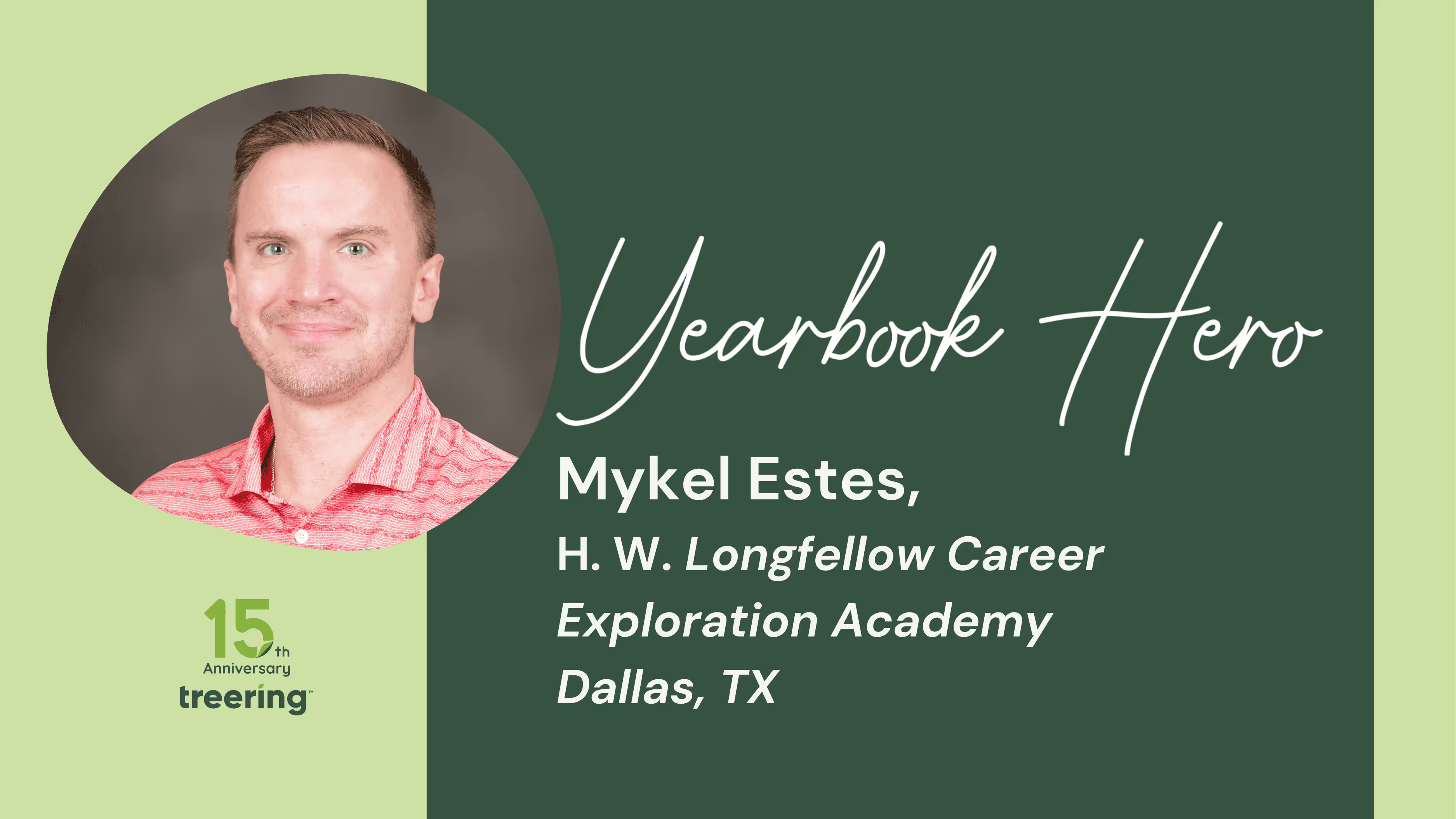
Yearbook Hero Mykel Estes modernizes memories
Treering Yearbook Heroes is a monthly feature focusing on yearbook tips and tricks.
For months, Mykel Estes was just a cool teacher we followed on X. Known in Dallas ISD for innovation and student engagement, the former Teacher of the Year (2023-2024) created a bracket so students could vote on their favorite yearbook theme. Estes revealed the theme at Longfellow Career Exploration Academy's first yearbook signing party in a decade.
Changing up how we do the yearbook this year at @LongfellowCEA —
— Mr. Mykel Estes, M.Ed. (@MrMykelEstes) August 20, 2024
Adding student voice is a critical goal! With @Treering's gallery of great themes we are incorporating a "Theme Thrown Down"!
Let's see what the winning concept will be! @disdactivities @DISDMagnets pic.twitter.com/0JMzz4jLVy
A reading and language arts teacher, Estes became the yearbook adviser after a staffing change. Instead of taking the proverbial reins, he rewrote the book.
How was your first yearbook a reboot for the school?
There are some things that they've always done, and this is a new iteration of the yearbook. We switched to Treering and even changed photography teams. Everything was new. And since I did take it on solo, I needed that. I needed that ability to streamline.
The previous books felt like a faculty and staff heirloom, when really, this is for students.
How do you keep the yearbook student-centric when you’re a solo adviser?
I started with a bunch of y'all's resources: the ladder, dos and don’ts, and Camp Yearbook. And I gave the sample package I received to the outgoing eighth-graders and told them, "Look through here."
It reminded me of those old school toy catalogs. They marked it up. I told them nothing was off the table.
Their suggestions became the collective basis for how I started the book. It was all over the place. The themes constantly changed, and that's when I had the “This isn't my yearbook” moment.
The March Madness-style "Theme Throwdown" bracket was how I ensured the theme would resonate with current students. What I like, and what older students liked, may not resonate with our current students. This was one way to get buy-in.
What happened when the students at Longfellow received the yearbook before school was out?
The yearbook's a really exciting kind of moment in a student's academic year, and from the pandemic on, the yearbook never arrived before the students left. There was a palpable disappointment in the students not being able to have that shared experience of looking for themselves in the yearbook and signing one another’s.
We do a big eighth-grade celebration week to commemorate the last time the cohort is together. (We feed into roughly 20 different high schools as a magnet school.) I really leaned into that nostalgia.
The eighth graders got them first. Again, leaning hard into that's their last time here. They get it first. Then we subsequently rolled it out to the lower grade levels.
What’s next for the yearbook?
We are a career academy. We have a journalism class coming up. We have a photojournalism class coming up. Those two classes will eventually marry in a year's time or so and be the production team for the yearbook.
Until then, I want to add student voices through quotes and make sure every kid is in the book. Every kid should at least be in the portraits. I want to expand that to a classroom and activity photo.

Teaching yearbook: 60 bell ringers
How different would your yearbook class or club be if you had ten minutes at the start to focus your team on the day's objectives and transition them from hallway to classroom mode? Working with middle and high school yearbook advisers, we created 60 Bell Ringers to do just this. Use the prompts below to teach and strengthen skills by dropping them in Google Classroom, displaying them in a slide deck, or writing them on the board.
- Why Do You Need Bell Ringers for Yearbook?
- Teambuilding
- Bell Ringers to Teach Writing
- What’s Happening Here?
- Brainstorming Bell Ringers
- Use These Bell Ringers to Model a Yearbook Critique
- Writing Prompts for Reflection
Why do you need bell ringers for yearbook?
While we often pump the intro to design and copywriting lessons the first few weeks of the school year, the overwhelming nature of organizing photo shoots, liaising with club sponsors or athletic coaches and scheduling picture day take precedence. (Validation: those things are vital for the success of your yearbook–keep doing them!)
If you’re submitting documentation for WASC or your admin, bell ringers activate learning by giving students a quick thought-provoking question, problem-solving exercise, or yearbook critique activity. Some bell ringers encourage critical thinking, and others serve as an anticipatory activity because they stimulate students’ curiosity.
TLDR? Use bell ringers to set the tone.
Teambuilding
Yes, you’ll have your group games, yearbook weddings, and human knots. And no, that’s not all you’ll need to forge connections and build trust. These prompts help students share and learn about each other’s interests, preferences, and experiences and teach empathy for those they’ll interview in the weeks ahead.
- “Emoji Introduction”: Share three emojis that represent different aspects of your life. (Afterward, students share their emojis with the class and explain their choices, providing insights into their personalities and experiences.)
- “Time Capsule”: Describe five things you would put in a time capsule for yearbook students 10 years from now.
- “Do-Over”: What is one thing you wish you had done differently this year and why?
- “Influencer”: Share a book, movie, or song that profoundly impacted you and explain why it resonated with you. (If appropriate, you may want to create a yearbook team playlist for motivation, or when it’s time to celebrate good times… come on!)
- “Self-Promotion”: What role does the yearbook play in fostering a sense of community and collective identity within the school? How are you contributing?
- “Dear Younger Me”: Reflect on your overall personal growth and development throughout your time on the yearbook staff and how it has shaped you as an individual. What did you wish you knew at the start of the year?
- “Mind Shift”: Describe a class or subject that you initially didn’t enjoy but ended up loving and why your perspective changed.
- “Second Life”: What is something you are proud of accomplishing outside of academics this year?
Bell ringers to teach writing
Quick math lesson: one five-minute writing bell ringer debrief a week will give your students an additional 200 minutes of writing practice. With these short writing tasks, advisers can also provide more immediate feedback to students when they share their work. Don’t think of it as an informal assessment that requires a line item in the grade book, but rather as facilitating continuous growth.
Ledes and captions
- What is the importance of a compelling lede in a piece of writing? Share an example of a lead that successfully captures your attention and explain why it stands out to you.
- Think about a memorable article or story you’ve read recently. Analyze the lede and discuss how it effectively hooks the reader and sets the tone for the rest of the piece.
- Choose a recent photo from your phone and write three possible ledes: one pun, one using your theme, and one three-word attention-grabber.
- Reflect on a nearly finished spread and revise at least one lede. Share how it improved the overall impact of your writing.
Feature stories
- Think about a significant moment or event from your school year that you believe would make a great yearbook story. Outline the key elements of the story, including the people involved, the emotions experienced, and the impact it had on the school community.
- List potential angles, interview questions, and storytelling techniques you would employ for a personality profile for a student you do not know.
- Interview another yearbook student about a personal experience or accomplishment from this school year. Write a brief summary of the story, including the central theme, key moments, and the message or lesson it conveys.
- Brainstorm ideas for a yearbook story that celebrates the diversity and inclusivity of your school community. Share potential story angles or interview questions that would help capture the richness of your school’s diversity.
- Have students gather in small groups and share one memorable experience or event from the school year. Each group should choose one story to develop further as a potential yearbook feature. Encourage them to discuss the key moments, people (directly and indirectly involved), emotions, and impact of the story.
- Provide students with a collection of unused photographs from a specific school activity. In pairs or individually, students should select one photo that catches their attention and write a brief story idea based on the image. Encourage them to consider the context, characters, and potential narrative elements.
- Organize a “Story Pitch” session where students can present their yearbook story ideas to the class. Each student should prepare a short pitch, explaining the central theme, key moments, and the significance of their chosen story. Encourage constructive feedback and discussion among the students.
What’s happening here?
These yearbook caption bell ringers work best when paired with a photo of a prominent event on campus or one from history or pop culture. The goal is to unpack the action and the story within the image. For consistent practice, make a weekly event, such as “Photo Friday,” to cycle through these prompts.
- List the who, what, when, where, why, and how of this photo.
- List 10 or more verbs to describe the subject’s action or state of being in this photo.
- List 10 or more emotions to describe the subject’s action or state of being in this photo.
- Create a caption using only emojis.
- Caption this in five words.
Do you need photo inspiration? We love the New York Times.
Brainstorming bell ringers
Sometimes a five-minute brain dump is all you need to break out of a slump.
- Looking at the school events calendar for the week, list different approaches you could take to cover each event in a table labeled before, during, and after.
- Design a unique “map” page showcasing the school campus and highlighting key locations, such as classrooms, the cafeteria, and outdoor spaces.
- Create a visual timeline of major school events throughout the year, using icons or symbols to represent each event.
- List 10 “hacks” that make school easier for you.
- Create a mini infographic showcasing interesting statistics or facts about an aspect of the school year.
- Design a series of icons or symbols to represent different academic subjects, extracurricular activities, clubs and organizations, and sports teams in the yearbook.
- Sketch a “Behind the Scenes” spread showcasing the yearbook team’s work so far.
- List teachers, labs, projects, field trips, and assignments that challenged you to think creatively or outside the box.
- [Display unused yearbook photos of note in a “Yearbook Story Idea” station.] Consider uncovered aspects of the school year and brainstorm three ways to get them in the yearbook.
Use these bell ringers to model a yearbook critique
Every student (and adviser) who helps produce the yearbook puts their work on display. No other group of students’ homework is hanging around 10, 20, or 50 years later like a yearbook. Boom. That said, use these critique prompts to reinforce positive comments.
- [Display a spread] Sketch the layout and identify each component (e.g. gutter and caption).
- List the elements we used to create a sense of unity and flow throughout the yearbook. What are there recurring visual motifs or elements that tie the pages together?
- [Display three spreads from your yearbook] Give five specific examples of how these spreads carry out our theme.
- Using an in-progress spread, give five examples of how your design connects to the remainder of the yearbook.
- [Display a spread] Sketch the layout. Identify the primary and secondary design elements and explain whether the hierarchy of information is clear.
- Reflect on a memorable moment from a previous yearbook. Analyze the elements that made the module, spread, or story engaging.
Two things:
- Start with examples of strong design from your students to highlight the wins.
- Keep it technical. When students use terms like eyeline, dominance, and alignment, there is a specific element to which we can attend versus “I don’t like it.”
Writing prompts for reflection
Sometimes, students need time and space to be introspective. These bell ringers are less about the how of yearbook and more about the why. After answering them in class, try using them for interview topics for other students to use in personality profiles or sidebars.
- If you could give one piece of advice to future students, what would it be and why?
- What is one thing you learned about yourself this year that you didn’t know before?
- Describe a moment when you felt proud of yourself and explain why it was significant to you.
- If you could choose one word to summarize your overall experience in this school, what would it be and why?
- Share a story about a time when you overcame a challenge or obstacle and what you learned from it.
- Describe a teacher or staff member with action words and explain how they influenced you.
- Share a funny or embarrassing moment that happened to you during the school year.
- Share a piece of advice you received from someone that changed your mind.
- If you could create a new school tradition, what would it be and why?
- Describe a time when you felt like you made a positive difference in someone else’s life.
- What is one thing you wish you had known as a freshman/sophomore/junior that you know now as a senior?
- Describe a moment when you felt like you truly belonged and were part of a community.
- If you could interview any historical figure, who would it be, and what five questions would you ask them?
- Share a piece of advice you would give to incoming freshmen and explain why you think it’s important.
- Reflect on a moment when you felt inspired or motivated by someone else’s actions or achievements.
- Share a quote or motto that has guided you throughout this school year and explain its significance to you.
- If you could go back and change one decision you made this year, what would it be and why?
- Describe a meaningful friendship.
- Reflect on a time when you had to step out of your comfort zone and how it contributed to your personal growth.
- What would you want to ask or know about your future self?
- Describe a memorable moment from a school event or celebration and why it was special to you.
By choosing to incorporate bell ringers, you’re optimizing instructional time by utilizing the initial minutes of class effectively. By engaging students immediately, you’ll minimize transitional periods and idle time, ensuring that yearbooking (and learning) begin promptly.

Free yearbook syllabus template & course description tips
It doesn’t matter if you’re teaching World Literature, AP Chemistry, or (you guessed it) a yearbook course, creating a syllabus can be a bit of a time suck.
There’s a fine line between including enough information to answer students’ questions and providing the kids in your class with an intimidating tome they’ll never glance at again. This presents a special sort of problem for yearbook courses, since the endgame isn’t a term paper or oral presentation or lab but, rather, a physical product.
If you’re a veteran yearbook teacher, you’ve probably got your syllabus ready to rock; a few tweaks here and there to reflect date changes and updated requirements and you’re all set. If you’re new to the game, though, where on Earth do you begin?
Why, right here. (Of course…)
Inside this post, we’ll share a free yearbook syllabus template with you and walk you through the most important components to include. That way, you’ll know exactly what your students need for a semester (or year) of success.
Use the information we’ve laid out in this post to fill in the particulars and your students will be ready to get to work on the best book your school’s ever seen.
Yearbook syllabus component #1: course description
We’ll start out with something simple: The course description, simply put, exists to explain to students exactly why they’ve stumbled into your classroom.
In your yearbook syllabus, that description should provide a quick snapshot of your course. Students should have already seen the course description when they decided to sign up during course selection, but including it here gives both participants and their parent/guardian an idea of what to expect without having to dig through your syllabus.
In the philosophy and goals sections that come after the course description, you’ll elaborate on the why and how of your yearbook class. Here, however, your goals is to simply impart what the course is.
If you structure your class in such a way that all students try their hand at everything, mention that here; if your class tends to run like a newspaper or publishing house, in which students identify a specialty and work towards their individual craft, that’s important to note, too.
Yearbook syllabus component #2: course philosophy
Your course philosophy is another important piece of your yearbook syllabus. While you may have included an instructional philosophy on syllabi for other classes you’ve taught, your approach towards creating one for this class in particular requires an additional layer of thought.
Why, you might ask?
Because you and your students are creating something that their peers will fawn over for days and then cherish for decades.
Your yearbook course philosophy should provide answers to the following questions:
- Why are students here?
- How will they accomplish the monumental task set before them?
- What will learning look like in this course?
The key here is brevity. While you could ramble across a dozen pages explaining the intricacies that underpin every assignment the majority of your students would either ignore them or flee at the very sight. Keep it simple.
Yearbook syllabus component #3: course objectives
The final introductory component of your syllabus, before we get into the technical stuff, is your list of course objectives.
The trick here is formatting: Think back to your own educational experiences, the path you took to becoming a teacher. Remember those pedagogy classes you had to take before standing in front of a classroom? We sure do. (Yup; some of us here at Treering were education majors.) And the thing that’s stuck with us best is the scientific-sounding SWBAT, or “Students will be able to” format in which our professors insisted we frame course goals.
By creating between five and ten goals, laid out in a numbered or bulleted list, you make it clear exactly what your students will walk away with. You know, other than a yearbook.
Since yearbook classes have such potential for variance on a student-by-student basis (a graphic designer, a journalist, and a copy editor will have vastly different, albeit equally important, semesters) there are a couple of ways to approach goal creation. You might choose to make your goals broad enough to capture the experiences all members of your course will have. You could use each goal to highlight what you expect from photographers, writers, designers, and so forth.
Spend some time thinking about which method will work best in the context of your course, and don’t be afraid to modify goals (using student feedback) once your yearbook is published.
Yearbook syllabus component #4: resources
While it’s highly unlikely that you’ll be leaning on a clunky textbook to impart yearbook wisdom on your students, there will undoubtedly be a set of materials and resources that are necessary for both student success and yearbook creation.
Again, there will be variance here based on the roles each student assumes on your yearbook staff. It might be helpful to divide your “Resources” section up into sections based on these roles (for example, a journalist isn’t going to need a camera, but they will need a notebook and pen and perhaps a voice recorder to ensure accurate quotes and a record of useful details that will bring the retelling of a school event to life).
If your school provides students with laptops—or if you’ll be using a computer lab—be sure to spell out exactly which pieces of software they’ll be required to use in order to perform within their given role. If your school doesn’t possess some of the fancier, more expensive resources, like professional design software or professional-model cameras, get creative by discovering free browser-based tools and leveraging the power of the smartphones nearly every kid has in their pockets to create great content.
(Note: don’t forget to include a note on lost or damaged school property!
Yearbook syllabus component #5: student evaluation
Ah, grades… every student’s favorite subject.
Spelling out exactly how your students will be assessed is a really important part of establishing expectations for the upcoming semester. While you might not want to come right out and say “to get an A, you need to do…”, it is important to break down the factors that contribute to student evaluation. If participation and attendance account for 20% of a student’s grade, mention that; if attending out-of-class events for the purposes of content creation is necessary in order to earn an A, make that clear, too.
You’ll notice in the syllabus template that the “Student Evaluation” section has been left blank; that’s because every school uses a different set of standards by which to measure student success. If your school uses a rubric-based grading system, include an example, detailing the various levels at which students are to be evaluated (and what success should look like for each one).
Yearbook syllabus component #6: course rules & requirements
Laying out exactly what’s expected of students in terms of behavior is foundational to their academic progress and your yearbook’s success.
If you tend to run an open classroom, spell that out; if students can come and go as they please, which may very well be the case given the nature of a yearbook course, tell them. Conversely, if you’re looking to foster a more structured environment, one with more instruction than content generation, you might want to explain the role of participation and importance of active listening.
While it may seem redundant to spell out behavioral expectations, it can’t hurt to hammer home how students should act in class. A yearbook course teeters somewhere between a traditional academic environment and a publishing house; respect for ideas and the structure you establish is paramount. This goes without saying, but don’t forget to highlight the importance of academic honesty. It’s one thing to plagiarize a book report; it’s another thing entirely to steal from uncredited source material and then publish it in a yearbook.
Yearbook syllabus component #7: attendance policy
While “come to class” should seem obvious, there’s always some smart alec who will consider using “it didn’t say so in the syllabus” to weasel his or her way out of showing up.
It’s likely that your school has its own attendance policy; if this is the case, simply copy, paste, and call it a day. In the event it’s up to you to decide on an attendance policy, carefully weigh how many tardy arrivals and absences you’re willing to afford your students.
There’s one specific area in which an attendance policy for your yearbook course will differ from that of calculus or chemistry or any other subject for that matter: out of class time is necessary. Students will need to spend time at school events or working on completing your book as deadlines approach; be sure to spell this expectation out in your syllabus.
Yearbook syllabus component #8: course calendar
Your course calendar is the scaffold for the semester, the year, and your yearbook production cycle
While it may very well be subject to change based on the pace at which your students learn and subsequently complete the work, you’ll want to make sure that your course calendar includes:
- Weekly goals and subjects covered in class
- Important publishing-related suspenses
- School events that will require coverage
- Required after-school workdays
Yearbook syllabus component #9: parent/guardian acknowledgement
This final component of your yearbook course is an affirmation that both your students and the people at home are on the same page as you. While this is standard for a syllabus at the high school level, it’s extra important that parents/guardians understand the importance of the out-of-school component of your course.
Ready to create your own yearbook course syllabus? Does the thought of staring at a blinking cursor on an empty word document incite procrastination or fear (or both!)? Thankfully, you don’t need to start from scratch. Download our free template and use everything you just learned to jumpstart your yearbook course syllabus creation.

Yearbook color theory: what it is and how to use it
Color is more than decoration: it’s a communication tool. In a yearbook, color helps reinforce the mood of each section, creates visual hierarchy, and supports your theme. Understanding the basics of color theory enables you to make design choices that are intentional and effective, not just trendy. (If trendy design is your thing, head over to this blog.)

The Color Wheel
I can’t emphasize this enough: color is a complement to content. The right combination can make your theme feel energetic, calm, serious, or playful. Understanding how color affects emotions will affect your readers’ experiences.
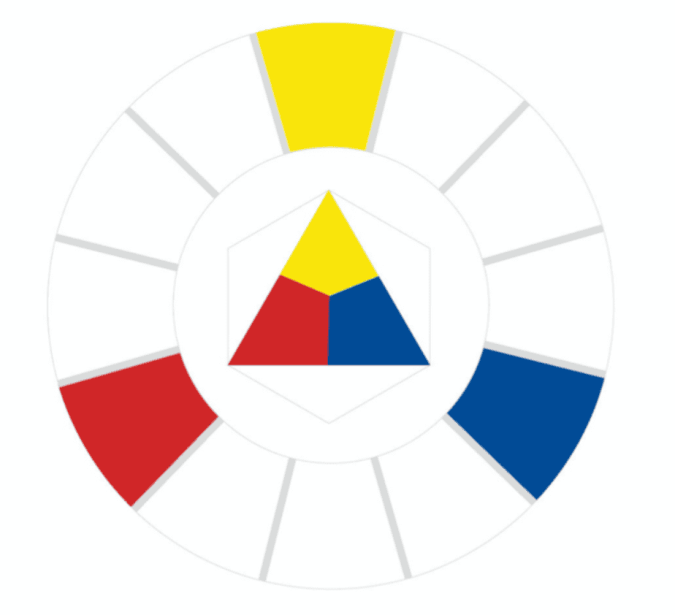
Primary Colors
Red, yellow, and blue are the OG trio. As you learned in elementary school, you can’t make them by mixing other colors, and they can be combined to create every other hue. A section opener with a bold red or yellow background can instantly grab attention—just keep your type simple so it’s still readable.

Secondary Colors
Orange, green, and purple come from mixing two primaries. Secondary colors are a safe way to add contrast to pages without them looking too loud.
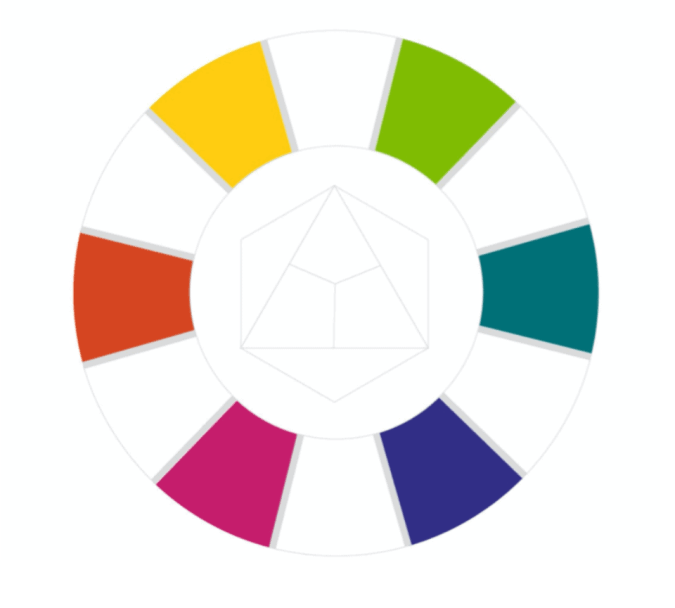
Tertiary Colors
Mix a primary with a neighboring secondary and you’ll get shades like yellow-orange or blue-violet. These in-between shades are perfect for customizing your theme. For example, swap standard blue for blue-green to make a traditional palette feel more modern.
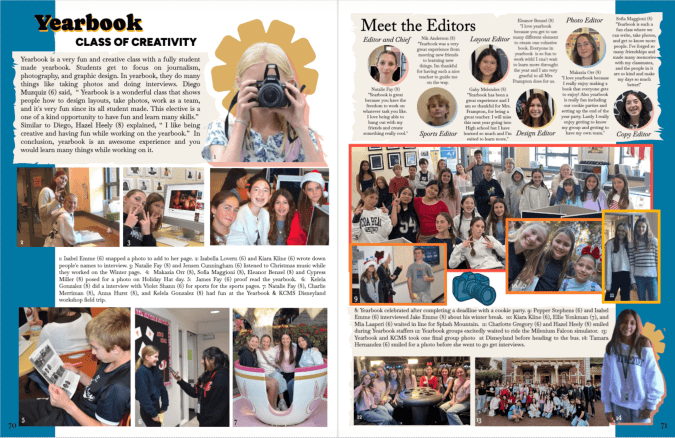
Color Harmony
Color harmony is about choosing combinations that are pleasing to the eye, and useful to you, the designer. Whether you’re creating a visual flow across a spread or building a full-book palette, these harmonies keep your pages cohesive.

Complementary Colors
These are opposites on the color wheel, like blue and orange or red and green. They create strong contrast. Use complementary color accents for headlines, callouts, or graphic elements.
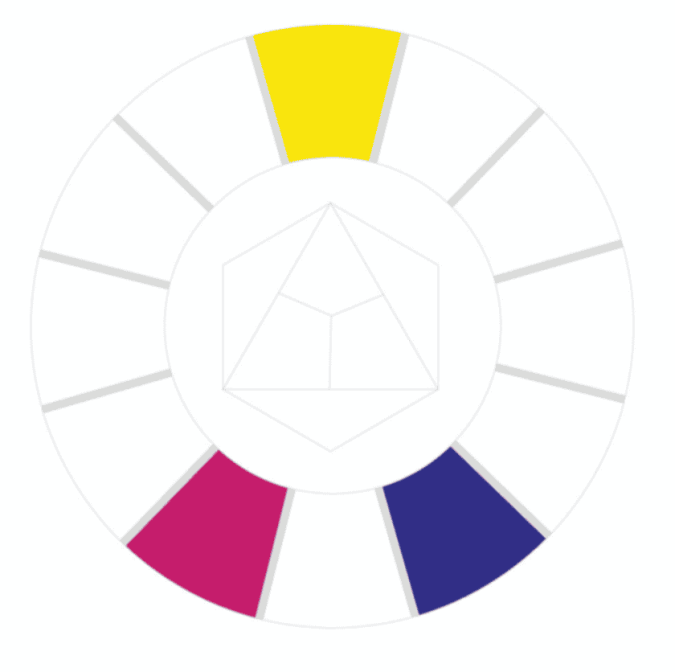
Split Complementary
Choose one color (yellow) and pair it with the two colors next to its opposite (blue). This gives you contrast without tension. For example, if your school color is yellow, balance it with pops of magenta and violet.

Analogous Colors
These sit next to each other on the wheel and are generally harmonious and soothing. If you’re getting started with color, use an analogous palette to determine your dominant, supporting, and accent colors.
It’s easy to look at these and think you’re limited to three. Using varying tints and shades for value contrast will expand your palette.

Triadic Colors
Triadic schemes use three evenly spaced colors on the wheel. We see this with the primary colors. Now shift over, you have the ultimate retro palette.

Monochromatic and Grayscale
One color, many values: Monochromatic palettes have so much potential. Purple can have varying degrees of school spirit, while black is sleek and modern. They create contrast, demonstrate intensity, and serve as a base to add accents for emphasis.
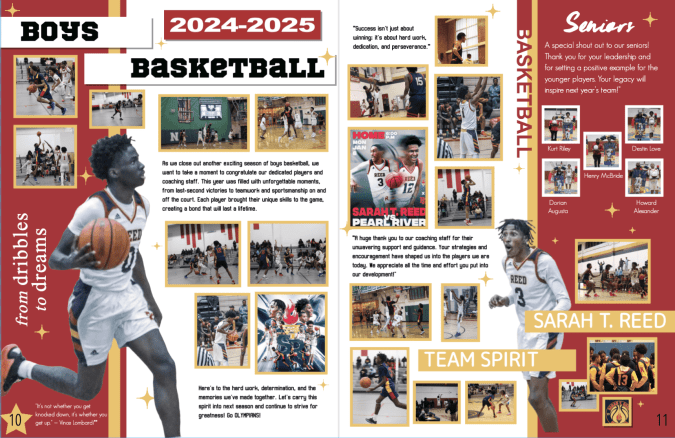
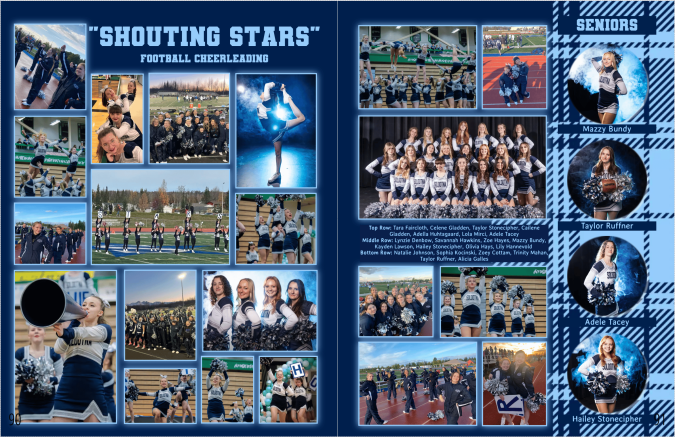
Warm vs. Cool Colors
Warm and cool colors affect how your pages feel emotionally. Look at the two athletic examples above. You can feel the difference. In one, you're sweating with the team and on your feet. In the other, you're maintaining what's left of your voice, sipping cocoa under a blanket with your best friend.
Likewise, use color to determine how the student body will experience your verbal theme.
Putting It All Together
Here’s how to apply color theory to your yearbook:
- Pick a palette early. Choose up to five colors that support your theme and stick with them. Put them in your style guide.
- Use color to organize. You could assign colors to sections, use colors as the backgrounds to modules or pull quotes, or with your headline font to show points of entry.
- Make color intentional. “Don’t decorate… design” is every design teacher’s go-to for a reason. Be intentional and ask, “What mood am I trying to create?” “What color harmony supports that?” “Why isn’t this working?”
- Check accessibility. Make sure the text has enough contrast from its background.
- Balance bold and neutral. Too much color can overwhelm. Whitespace will always be your friend.

